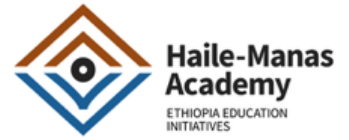
Human Rights Education and Social Emotional Learning
Curriculum
Conflict Resolution Unit
Facilitator Guide
Developed by Kaylee Bradford, Kate Cornelius, Lauren Gonzalez, & Andrew Haas
Edited by S. Garnett Russell
May 2020

2
CONFLICT RESOLUTION CURRICULUM
Table of Contents
Curriculum Sequence p. 3
Session 1: Introduction to Conflict Resolution p. 4
Session 2: Know Your Own Management Style p. 11
Session 3: Learning to Identify Conflict Management Styles p. 17
& Creating Positive Outcomes
Session 4: Managing Emotions p.24
Session 5: Active Listening p. 35
Session 6: Constructive Communication p. 44
Session 7: Empathizing with Others p. 52
Session 8: Human Rights and Conflict Analysis p. 60

3
CONFLICT RESOLUTION CURRICULUM
Session
Activities
1. Introduction to
Conflict Resolution
1. Conflict Role- Play Introduction Activity (10 minutes)
2. Discussion on Defining Conflict (15 minutes)
3. Responding to Conflict T Chart Activity (25 minutes)
4. Closing Remarks and Reflection (10 minutes)
2. Know Your
Management Style
1. Comfortable with Conflict? (10 minutes)
2. Conflict Management Assessment (15 minutes)
3. Group Discussions (15 minutes)
4. Presentations (15 minutes)
3. Learning to Identify
Conflict Management
Styles & Creating
Positive Outcomes
1. Group Review (8 minutes)
2. I Get Upset When … (8 minutes)
3. Can You Guess the Style? (30 minutes)
4. Whole Group Reflection (10 minutes)
4 . Managing Emotions
1. Optional Speaker Reflection (5 minutes)
2. Identify the Emotion Activity (10 minutes)
3. Revisiting Wants, Needs, and Rights Activity (15 minutes)
4. Self-Assessment of Personal Emotions and Bodily Signals (10
minutes)
5. Strategies for Mindful Self-Management (15 minutes)
6. Whole Class Debrief (5 minutes)
5. Active Listening
1. Introduction: Telephone game (10 minutes)
2. Active Listening in Conflict Activity (20 minutes)
3. How to be an Active Listener Discussion (10 minutes)
4. Respectful Listening Activity (20 minutes)
6 . Constructive
Communication
1. Draw My Picture Activity (10 minutes)
2. Identify the Types of Communication (10 minutes)
3. Getting Organized Before Conflict Resolution (15 minutes)
4. Strategies for Constructive Communication (20 minutes)
5. Whole Class Debrief (5 minutes)
7 . Empathizing with
Others
1. Cross the Line (15 minutes)
2. Small Group Discussions (10 minutes)
3. Someone Else’s Shoes (20 minutes)
4. Whole Class Debrief (15 minutes)
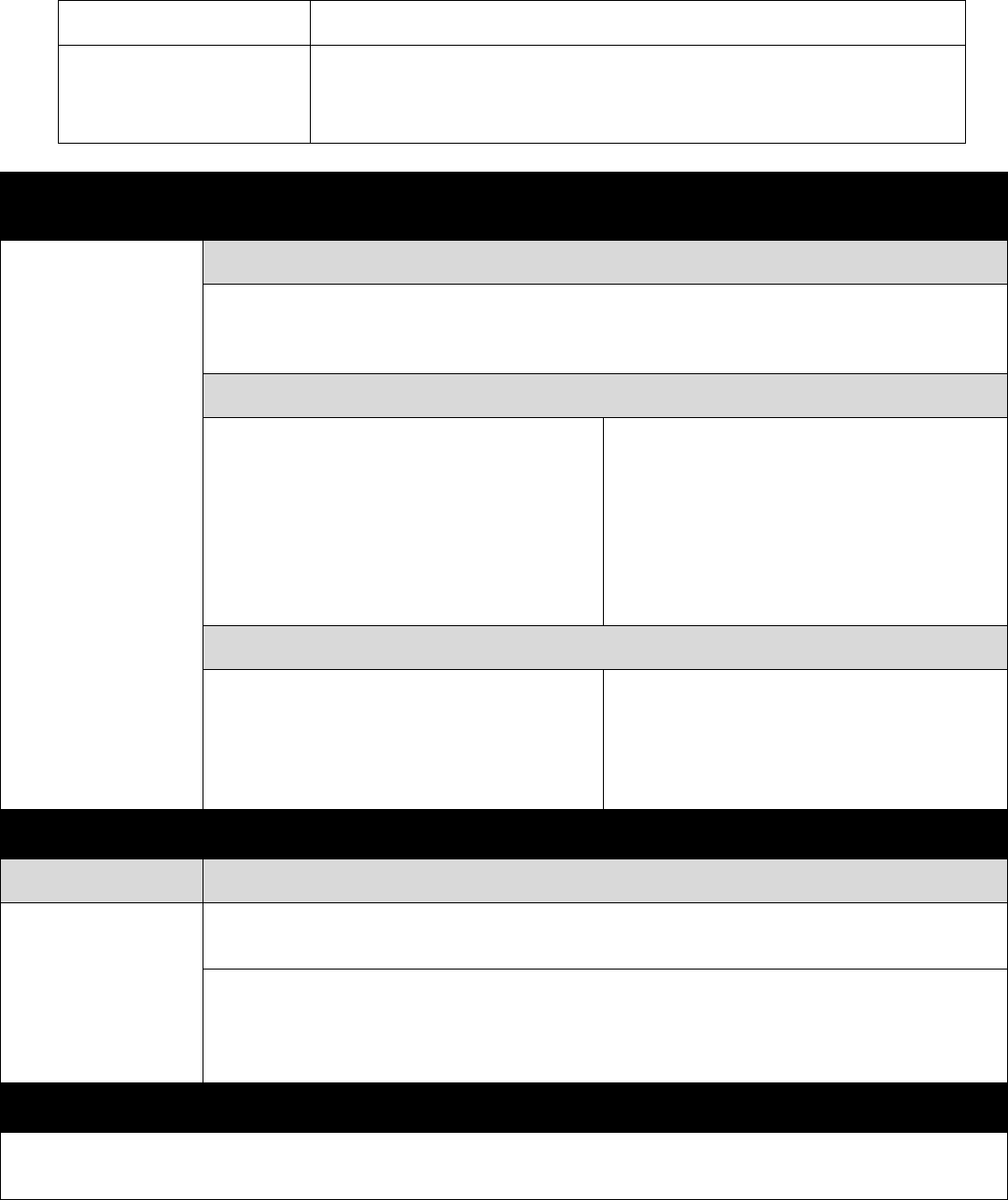
4
CONFLICT RESOLUTION CURRICULUM
8 . Human Rights and
Conflict Analysis
1. Snowball Brainstorming (5-8 minutes)
2. Analyzing Conflicts (25 minutes)
3. Group Presentations & Debrief (25-30 minutes)
Stage 1 – Desired Results
ESTABLISHED
GOALS
Session 1:
Introduction to
Constructive
Conflict -
Throughout this
lesson, students will
take a critical look at
the complex nature of
conflict. They will
achieve this by
identifying positive
and negative
responses to conflict
within a community
or society, and then
reflecting how that is
expressed in their
own lives.
Transfer
Students will be able to independently use their learning to…
1. Identify conflict in their own lives.
2. Identify positive and negative forms of conflict resolution.
Meaning
UNDERSTANDINGS
● Identify different types of conflict
resolution. (Negative and Positive)
● Understand that there are different paths
toward resolution.
● Categorize conflict within their own lives.
● Understand human rights frameworks and
themes within conflict/resolution.
ESSENTIAL QUESTIONS
● What is conflict?
● What are the different types of
conflict?
● Where does conflict exist?
● How can conflict be responded to
positively versus negatively?
Acquisition
Students will know…
● How to define conflict.
● Understanding where conflict exists.
● Positive conflict resolution strategies.
Students will be skilled at…
● Identifying positive and negative
conflict resolution strategies.
● Hypothesizing constructive conflict
resolution techniques.
Stage 2 – Evidence and Assessment
Evaluative Criteria
Assessment Evidence
Class participation &
participation in small
group activities.
PERFORMANCE TASK(S):
● No assessments will be given during this lesson.
OTHER EVIDENCE:
● Introduction “Identifying parts of Conflict” Activity
● Conflict Response T-Chart
● Participation and Reflection in the closing discussion.
Stage 3 – Learning Plan
Summary of Key Learning Events and Instruction
● Conflict Role-Play Introduction Activity

5
CONFLICT RESOLUTION CURRICULUM
● Discussion on Defining Conflict
● Responding to Conflict T Chart Activity
● Closing Remarks and Reflection
Session 1: Introduction to Conflict Resolution
Duration: 1 hour
Session Summary: This lesson will provide learners with an introduction to conflict and conflict
resolution. Teachers will help students define conflict and navigate positive conflict resolution
strategies. Learners will participate in class and small group discussions to think critically about
conflict, identify positive conflict resolution strategies and recognize the challenges and
importance of positive conflict resolution.
Session Objectives:
By the end of this lesson, learners will be able to:
● Define and identify conflict within their own lives.
● Recognize the different paths towards conflict resolution.
● Demonstrate an understanding of positive and negative conflict resolution strategies.
Session Outline:
1. Conflict Role- Play Introduction Activity (10 minutes)
2. Discussion on Defining Conflict (15 minutes)
3. Responding to Conflict T Chart Activity (25 minutes)
4. Closing Remarks and Reflection (10 minutes)
Materials:
● Whiteboard and Markers
● Pen/ Pencils
● Handout 1.1: Conflict Role- Play Script (one per student)
● Handout 1.2: Defining Conflict Note Taking Sheet (one per student)
● Handout 1.3: Conflict T-Chart handouts (one per student)
Pre-work for Facilitator:
● Review Entire Lesson before implementing
● Print out Handouts 1.1, 1.2 and 1.3.
● Adapt examples in Discussion on Defining Conflict Activity to include context-specific
instances to relate to your advisory group.

6
CONFLICT RESOLUTION CURRICULUM
Activity 1: Conflict Role-Play Introduction Activity
10 minutes | Entire Class
Materials:
● Handout 1.1 (one per student)
Activity Summary: The purpose of this activity is to engage students in a discussion about
everyday conflict. Students will listen to the conflict script and begin thinking about the different
perspectives and motivations behind conflict.
Steps:
1. Introduce the purpose of the lesson and activity.
2. Provide each student with Handout 1.1.
3. Choose two students to go in front of the class and role-play the short scenario listed below.
Designate one student Person A and the other Person B. Encourage students to put emotion
into the script! You may choose to have 2 - 3 groups of students read the prompt in front
of the class to get more students to participate.
A: “I was right in front of the goal! Why didn’t you pass me the ball!?”
B: “ The coach told me to shoot the ball!”
4. Ask students to reflect on the conflict and have students respond to question prompts below
as a class.
a. Who is involved in the conflict?
b. Is anyone else involved in the conflict?
c. What do you think person A & person B in the conflict were thinking?
d. How do you think person A & person B in the conflict were feeling?
e. What were the motivations behind person A & person B’s actions?
5. Explain that conflicts are complex no matter how small. Conflict involves various feelings,
beliefs and motivations.
Facilitator’s Note: If the discussion is slow to start, restate the questions. If time permits, you
might also ask the students to reflect on and share a past experience they’ve had in a conflict.

7
CONFLICT RESOLUTION CURRICULUM
(Fairfax County Public School, 2010)
Activity 2: Discussion on Defining Conflict
15 minutes | Entire Class
Materials:
● Whiteboard and Markers
● Handout 1.2 (one per student)
● Pen/ Pencil
Activity Summary: The purpose of this activity is to have students examine and discuss their own
definitions of what conflict is as well as recognize where conflict exists and happens within their
lives, the community, and the world.
Facilitator’s Note: Facilitators should be guiding and supplementing the discussion but
allowing students to lead the conversation and express their thoughts and opinions. Examples
have been provided to help steer and facilitate the conversation. Encourage students to take
notes during the discussion.
Steps:
1. Introduce the purpose of the activity.
2. Provide each student with Handout 1.2.
3. Divide the board into three parts labeling them positive and negative.
4. Ask the class to define and provide examples of conflict and divide the responses into
positive and negative categories.
Facilitator’s Note: The teacher should point out and identify the positive and negative aspects of
conflict. Making a point to emphasize that both exist in conflict. After students provide examples
of negative and positive conflict encourage students to discuss reasons that someone might
choose to use a negative response to conflict instead of a positive one. To emphasize that the
decision for how to respond to major conflicts is rarely simple.
Examples of:
- Positive responses to conflict: Dialogue and discussion, creating understanding
- Negative responses to conflict: Verbal or physical fighting, violence, war, self-
harm
5. Divide the board into four squares. Have students identify with whom the conflict was
between in the initial activity and write “between people” on the board. Ask students if

8
CONFLICT RESOLUTION CURRICULUM
they can draw on any other examples of person to person conflicts. Instruct students to fill
in the boxes on their worksheet under the question Who is the conflict between?
6. Ask students what other kinds of conflicts there are. Once they guess, have them think of
an example for each.
1. Within people (a person versus themselves)
- When a person is struggling with their moral character or identity.
- Example:
- A person is questioning their sexual orientation.
- A person is questioning their faith.
- A student is struggling to determine which school they
would like to attend
2. Between people (person to person)
- When two people get into a disagreement.
- Example:
- A person is wrongfully accused of stealing another's
possessions.
- One student bullying or teasing another.
- Example from beginning of class with scoring the futbol.
3. Within groups (within a group)
- When people within one group get into a disagreement.
- Example:
- Students working on a group project have a difference in
opinion about the project’s topic.
- One of your siblings would like to move to a nearby city to
go to university but your parents want them to stay home.
4. Between groups (group to group)
- Two separate groups are in disagreement.
- Example:
- A disagreement between two political parties on who
should be Prime Minister.
- A disagreement between two schools on who should win
the futbol game.
Facilitator’s Note: Students should also understand that conflict is common and expected in
everyday life. Not only are there many different types of conflict, but there are also many ways
of handling it as well. Conflict can be good or bad depending on how we learn to deal with it.
Additionally, that positive conflict resolution will lead to learning, problem-solving and a better
relationship and negative conflict resolution can lead to escalation and hostility.

9
CONFLICT RESOLUTION CURRICULUM
(Fairfax County Public School, 2010)
Activity 3: Responding to Conflict T-Chart Activity
25 minutes | Small Group
Materials:
● Handout 1.3: Conflict T-Chart worksheet (one per student)
● Pen/ Pencil
Activity Summary: Now that students are familiar with different types of conflict students will
practice identifying positive and negative strategies of resolving conflicts.
Steps:
1. Provide each student with Handout 1.3.
2. Divide the class up into 4 groups. Each group will be designated one of the four different
types of conflict. Each group must think of an example of the type of conflict. It may be
one they have experienced, seen, or heard about. Have each group designate on scribe and
one presenter who will summarize their discussion to the class.
Facilitator’s Note: Encourage students to think of examples that were not discussed. Although,
you can provide/ remind students with the Human Rights-Based examples which were
discussed in the previous activity as reference.
3. Inform students they will have 15 minutes to complete the T-Chart Worksheet in their
groups. They are to list at least three examples of ways the conflict can be positively
resolved and three ways the conflict can be negatively resolved.
4. After the groups have finished one representative from each group will share a brief
overview of their conflict and the constructive resolution strategies they have come up
with.
5. Encourage the class to add additional positive resolution strategies that were not discussed.
(University of Oregon, 2015)

10
CONFLICT RESOLUTION CURRICULUM
Activity 4: Closing Remarks and Reflection
10 minutes | Entire Class or Small Groups
Materials:
● None Required
Activity Summary: Students will reflect on the class activities with the teachers guiding questions.
Students will discuss how they think about conflict and how their opinion of conflict has changed.
Facilitator’s Note: These questions can either be discussed as a class or within their small groups.
It is important that students reflect on the positive aspects of conflict and how conflict can be
resolved in a constructive way.
1. Discuss the following questions with students.
a. Why is it challenging to think of ways to positively respond when you are in a fight
or conflict?
b. Are there other ways you might respond to conflict that are not positive or negative?
c. How do you usually respond to conflict?
Facilitator’s Note: Discuss with your school’s mental health counselor or school nurse
necessary safeguards, tools, guides, or resources to support learners. This is incredibly
important in case you discover a student is in an unsafe circumstance.

11
CONFLICT RESOLUTION CURRICULUM
Stage 1 – Desired Results
ESTABLISHED
GOALS
Session 2: Know
your own conflict
management style
In this lesson students
will discover their
own unique ways of
handling conflict and
think critically about
the strengths and
areas for growth of
the different conflict
management styles
Transfer
Students will be able to independently use their learning to…
3. Identify their own conflict management styles
4. Identify the strengths and areas for growth of each conflict management style.
Meaning
UNDERSTANDINGS
● Understanding we all approach conflict
differently, and that’s OKAY!
● Understand the +/- sides to each conflict
resolution style.
ESSENTIAL QUESTIONS
● Do we all approach conflict the
same way?
● What are the different ways in
which people handle conflict?
● What are potential strengths and
areas for growth in the ways we
handle conflicts?
Acquisition
Students will know…
● The different styles of conflict
management
● Their own general approach to
handling conflict
Students will be skilled at…
● Thinking critically about the strengths
and areas for growth in themselves
and their peers
Stage 2 – Evidence and Assessment
Evaluative Criteria
Assessment Evidence
Class participation &
participation in small
group activities.
PERFORMANCE TASK(S):
● Conflict management style survey results.
● Conflict management styles strengths and areas for growth worksheet
OTHER EVIDENCE:
● NA
Stage 3 – Learning Plan
Summary of Key Learning Events and Instruction
● Comfortable with Conflict? (10 minutes)
● Conflict Management Assessment (15 minutes)
● Group Discussions (25 minutes)
12
CONFLICT RESOLUTION CURRICULUM
Session 2: Know Your Own Conflict Management Styles
Duration: 50-60 minutes
Session Summary: This lesson helps students to identify and analyze their own conflict
management styles. They will explore their own approaches to conflict and consider their own
strengths and weaknesses. The lesson begins with an activity introducing the idea that we all handle
conflict differently. Next, students take a quiz identifying their own tendencies in conflict. Finally,
students will gather in groups and brainstorm strengths and weaknesses of the styles.
Session Objectives:
By the end of the lesson, learners will be able to:
● Demonstrate an understanding of their own conflict management style
● Identify the strengths and weaknesses of their own conflict management style
Session Outline:
1. Comfortable with Conflict? (10 minutes)
2. Conflict Management Assessment (15 minutes)
3. Group Discussions (25 minutes)
Materials:
● Pen/Pencils
● Handout 2.1: Conflict Management Style Survey (one per student)
● Handout 3.2: Conflict Management Style Descriptions and Questions Paper (one per student)
● Flip Chart Paper
● Markers
Pre-work for facilitator:
● Review the entire session before implementing.
○ If you can take the conflict management style survey personally before class,
students may appreciate knowing your style as well. It will also enable the teacher
to join discussions as a co-learner.
● Review the entire curriculum before implementing. You will be giving learners an
overview of the curriculum during the closure activity and it will be helpful to read the
entire curriculum beforehand.
● Print and staple copies of the Conflict Management Style Survey (Handout 3.2). Print
enough for every learner to have a copy. Students will use these for two classes.

13
CONFLICT RESOLUTION CURRICULUM
Activity 1: Comfortable With Conflict?
8-10 minutes | Entire Class
Materials:
● None required
Activity Summary: In this activity learners will discover that we all feel differently/respond
differently to conflict. The purpose of this activity is for students to realize that we all manage
conflict differently.
Steps:
1. Explain today’s learning objective. Students will learn their unique conflict management
styles. In other words, the way that they tend to act during conflict.
2. Ask students to form a circle around the teacher.
3. Tell students that “you are the conflict.”
4. Ask students to listen carefully as you read out loud each conflict scenario.
5. After you read each scenario (below), ask students to think about how comfortable they
feel with the conflict. Direct students to stand in relation to their comfort level with the
conflict.
a. For example, if they feel comfortable with the conflict they should stand closer to
you. If the conflict makes them feel uncomfortable they should stand farther away
from you (without leaving the room).
Conflict Scenarios:
● You are in an important meeting for a school project where major decisions are
being made that will affect your direct role in your group and job duties. Your
group members seem to be giving you more work than anyone else… How
comfortable do you feel with resolving this conflict?
● Your best friend asks to borrow your pen. You have an extra-pen, but you’ve
noticed that your friend always sticks the pens in their mouth and chews on the
caps… How comfortable do you feel with resolving this conflict?
6. Give students 10 seconds to stand in accordance with their comfort level.
7. Call on students and ask them to explain why they are standing there.
8. Repeat these steps for each scenario.
9. Tell students to take a seat after you finish the final scenario. Wait for students to be sitting
silently before moving on to the discussion.

14
CONFLICT RESOLUTION CURRICULUM
10. Lead a discussion with the class using the questions below.
Discussion Questions:
1. Did you always stand the same distance away from the conflict? Why or why not?
2. Why do some conflicts make some people feel more uncomfortable than others?
11. Thank students for sharing during the discussion. Explain to learners that each individual
has a unique way of approaching conflict. No one conflict management style is better than
another. We’re all different. By understanding our unique conflict management styles we
can be more aware of our strengths and recognize areas from growth. We can also better
understand how to engage in positive conflict with our friends.
12. Tell learners that in the next activity they will be taking a quiz that reveals their unique
conflict management styles.

15
CONFLICT RESOLUTION CURRICULUM
Activity 2: Conflict Management Style Quiz
15 minutes | Individual Students
Materials:
● Handout 2.1: Conflict Management Assessment Packet (one per student)
● Pen/Pencil
Activity Summary: In this activity, students will take an assessment identifying their core conflict
management style.
Facilitator’s Note: If you feel that students may struggle with reading comprehension, feel free
to read each question aloud to the class. It’s important that students understand that there is no
right or wrong answer. Whatever answer they feel is the most true for them is the correct one!
Steps:
1. Ask students to take a seat. Introduce the activity. Tell students that they will be taking an
assessment that will help them to understand what their conflict management style is. Tell
students to be honest. There are no right or wrong answers! This survey is designed to help
them understand their own conflict management style.
2. Read each question aloud to students. Tell students to only circle one number per question.
Wait for all students to answer before moving onto the next question.
3. When all of the questions have been read out loud, begin scoring. Read the directions for
scoring their own conflict management style aloud to students at the end of the survey.
4. Ask students to tally their scores and write their preferred conflict management style in the
space provided.
5. Tell students to leave the conflict style they would like to work on blank for now (they will
answer this after Activity 3).
6. Explain to students that the conflict style with their highest score indicates their most
commonly used strategy. No strategy is better than another. Each strategy/style comes with
its own strengths and weaknesses.
7. Inform students that in the next activity, students will explore the strengths and weaknesses
of each strategy in groups.
16
CONFLICT RESOLUTION CURRICULUM
Activity 3: Group Discussions
25 minutes | Small Groups; Entire Class
Materials:
● Handout 2.1: Conflict Management Assessment Packet (one per student)
● Pen/Pencil
Activity Summary: In this activity, students will gain a deeper understanding of the strengths and
weaknesses of each conflict management style. The activity will begin with students forming
groups of 3-4. The class will then read the first management style (i.e. collaborating) out loud.
Each small group will then have 2 minutes to brainstorm and write down 2 potential strengths and
2 potential weaknesses of the style. Afterwards, the teacher will call on a couple of the groups to
share their answers out loud with their peers. Then, these steps will be repeated for the next
management style.
Steps:
1. Ask students to grab a pen/pencil and their Conflict Management Survey Packet. Place
students in groups of 3-4 and ask them to take a seat.
2. Introduce the activity. Tell learners that they are now going to discover what each of their
conflict management styles mean and brainstorm their strengths and weaknesses.
3. Take 2 minutes to ask students the following question:
a. Why is understanding your strengths and areas for growth those of your friends in
conflict important?
b. Potential answers: Knowing our strengths can give us confidence, knowing our
areas for growth can help us resolve conflicts with friends and family, we can be
more aware of ourselves when we’re in a conflict with a friend or family member
etc.
4. Explain that in the next advisory class, students will be creating skits about the different
conflict management styles and guessing which one is which. This activity is meant to help
them prepare ….
5. Direct students to turn to Page 7 in their packet. Read the first conflict management style
aloud as a class. Ask students to spend 2 minutes brainstorming and writing down 1-2
strengths and 1-2 areas for growth for the style as a group in the space provided.
6. Call students back to attention after 2 minutes. Call on volunteers to share their answers
out loud.
7. Repeat these steps for the rest of the conflict management styles.

17
CONFLICT RESOLUTION CURRICULUM
Facilitator’s Note: If there is still time left over, ask students to fill out the conflict management
style that they would like to work on and how they can practice this conflict management style.
Make sure to collect students packets afterwards. They will need them for the next class.
Stage 1 – Desired Results
ESTABLISHED
GOALS
Session 3:
Learning to Identify
Conflict
Management Styles
& Creating Positive
Outcomes
In this lesson students
will focus on
identifying the
conflict management
styles through
creative role
play/skits. They will
also practice thinking
critically about how
to respond to conflict
in ways that promote
resolution.
Transfer
Students will be able to independently use their learning to…
5. Identify the conflict management styles
6. Brainstorm creative solutions for responding to conflict by using the conflict
management styles
Meaning
UNDERSTANDINGS
● Recognize their shared experience of
things that
frustrate/upset/sadden/anger/humiliate
them and their peers
● Understand how to use the conflict
management styles to assess conflict and
come up with creative solutions
ESSENTIAL QUESTIONS
● How can we identify conflict
management styles?
● How can we use our understanding
of people’s conflict management
styles to come up with creative
solutions to conflict?
Acquisition
Students will know…
● How to identify the different conflict
management styles in real life
simulations
Students will be skilled at…
● Identifying the conflict management
styles
● Assessing conflict and thinking about
alternative approaches to resolving
conflicts that lead to positive
outcomes
Stage 2 – Evidence and Assessment
Evaluative Criteria
Assessment Evidence
Class participation &
participation in small
group activities.
PERFORMANCE TASK(S):
● Conflict management style skit planning worksheet
OTHER EVIDENCE:
● Participation in whole group discussions
Stage 3 – Learning Plan
Summary of Key Learning Events and Instruction
● Group Review (8 minutes)

18
CONFLICT RESOLUTION CURRICULUM
● I Feel Upset/Frustrated/Angry/Humiliated When … (8 minutes)
● Can You Guess the Style? (30 minutes)
● Whole Group Reflection (10 minutes)
Session 3: Learning to Identify Conflict Management
Styles and Creating Positive Outcomes
Duration: 60 minutes
Session Summary: This session builds upon learners' understanding of the conflict management
styles and provides the opportunity for them to learn to identify their peers' approaches to conflict
and come up with creative solutions to resolving everyday issues. The purpose of this session is
for students to become more aware of themselves and others tendencies during conflict. This self-
awareness will help them to realize when they may be engaging in negative conflict and provide
them with the knowledge to pursue positive outcomes. Learners will begin by coming up with
relevant examples of issues they face in their own lives (home and school). Afterwards, they will
use their brainstorming session to develop group skits in which they demonstrate the different
conflict management styles. Their peers will guess what the skit’s conflict was and which conflict
management style was used. Finally, the whole class will reflect as a communal group on the past
two lessons.
Session Objectives:
By the end of the session, learners will be able to:
● Identify the different conflict management styles
● Demonstrate an understanding of how to creatively solve everyday disagreements and
conflicts
Session Outline:
1. Group Review (8 minutes)
2. I Feel Upset/Frustrated/Angry/Humiliated When … (10 minutes)
3. Can You Guess the Style? (30 minutes)
4. Whole Group Reflection (10 minutes)
Materials:
● Handout 2.1: Conflict Management Style Survey Packets (from last class)
● Handout 3.2: Get Ready to Act (one per student)
● Ball (or similar object)
● White board/Chalkboard or Chart Paper
● Marker or Chalk
● Pen/Pencils

19
CONFLICT RESOLUTION CURRICULUM
Activity 1: Conflict Management Style Review
8 minutes | Entire Class
Materials:
● Handout 2.1: Conflict Management Style Survey Packets (one per student)
Activity Summary: In this activity, students will review what they learned last class. The teacher
will ask the students to sit in pairs. They will have 2 minutes to discuss review questions together.
Afterwards, each student will take turns sharing out their partner’s answer to the question with the
whole class. This activity is meant to be a quick review.
Steps:
1. Ask students to sit in pairs. Ask 1-2 students to hand out the Conflict Management Style
Survey Packets from last class.
2. Introduce the activity and explain the purpose. This week students will be learning how to
identify other people’s conflict management styles. Today’s activity builds off of what they
learned last class. Students will discuss the provided questions in pairs.
3. Read the discussion question below. Give students 4 minutes to turn to the person next to
them to discuss the question.
a. Remind students to listen to their partner closely, because they might be called on
afterwards to share about their partner’s answer
b. Students can refer to their Conflict Management Style Surveys if they need help
remembering their answers.
4. Call students back to attention after 4 minutes.
5. Call on 2 people to share what they learned about their partner to the class. This should
take no longer than 3-4 minutes
Discussion Questions:
● What was your conflict management style and what does it mean?
● What is one other conflict management style that you would like to become better at?

20
CONFLICT RESOLUTION CURRICULUM
Activity 2: I Feel Upset/Frustrated/Angry/Humiliated When…
10 minutes | Entire Class
Materials:
● Ball (or similar object for throwing and catching)
● White board/Chalkboard or Flip Chart Paper
Activity Summary: In this activity, learners will express conflicts they experience in their daily
lives. The purpose of this activity is to personalize the learning material and make it relevant to
students. In the next activity, students will use the issues they identify to create skits on conflict.
Facilitator’s Note: Make sure to do this activity in proximity to a white board or chart paper.
As students identify things that make them upset, the teacher will write down their answers.
Steps:
1. Ask students to form a circle facing one another.
2. Introduce the activity. Tell students that this activity is meant to help the group think about
conflicts they experience in their daily lives. They will use the ideas they come up with in
the next activity.
3. Tell students they have 3 minutes to discuss the following question with the person to their
right.
a. Question: “Think of a time you were upset/frustrated/angry/humiliated that you feel
comfortable sharing with a friend, and share your stories with one another.” You
can inform students to use examples from school or home.
b. For example, “I feel angry when a friend steals my girlfriend, or humiliated when
I hear someone tell my classmates lies about me.”
4. After 3 minutes, tell students to stop and bring their attention back to the teacher.
5. Direct students to pass the ball (or similar object) around the circle, and whenever they
catch the ball complete the statement “I get _____ (angry/frustrated/upset/humiliated)
when….”
6. Write down the students' statements on a board or flipchart paper as they go (7 minutes for
this activity)
7. Thank students for sharing after every student has spoken.
8. Direct students to take a seat after the activity is finished.
Activity 3: Can You Guess The Style?
21
CONFLICT RESOLUTION CURRICULUM
30 minutes | Small Group; Entire Class
Materials:
● Brainstorming suggestions from Activity 1
● Handout 3.2: Get Ready to Act (one per student)
● Timer
● Pen/pencil
Activity Summary: In this activity, small groups of students will be assigned one of three conflict
management styles (avoiding, accommodating, or competing). They will then be assigned, or
choose, one of the examples that make them upset from the list created during activity one. Next,
they will create a brief skit demonstrating the conflict with one of the characters using the conflict
management style they were assigned. Students can refer to the descriptions from last class for
help if they need to.
At the end of each skit, have the class identify the conflict and conflict management style in each
skit and discuss how the team members chose to resolve the conflict. As a class, brainstorm other
strategies they could, as students, have used to resolve the situation. Repeat this for each skit
presented in the room.
Steps:
Part 1 – Skit Preparation
1. Ask students to number off 1 through 3. Ask students to then find their groups and take a
seat. Handout the “Can You Guess the Style” Worksheet.
2. Introduce the activity and inform students of the purpose. Students will be creating skits in
small groups. Students will have 10 – 15 min. to create a short skit demonstrating a conflict.
Each group will secretly choose one of the scenarios brainstormed during Activity 2.
Afterwards, the facilitator will assign them one of the three conflict management styles.
Students will write their conflict management style and the conflict scenario on their
handout sheets and answer the questions, which will help them plan their skits. Their skit
has to use the conflict management style they were assigned. Both their conflict scenario
and conflict management style must be kept a secret from the other groups. Students can
refer to their conflict management style surveys if they need help remembering what the
styles are.
3. Start your timer for 10 min. You can adjust the timer to 15 min. if needed.
4. Go to each group and tell them their conflict management style.
5. Give groups 30 seconds to choose their conflict issue.
6. Tell students they now have 10 – 15 min. to create their brief skits.
7. Notify learners when they have 5 min. left and check in on their progress.

22
CONFLICT RESOLUTION CURRICULUM
8. Notify learners when they have 2 min. Left. Ask small groups to take a seat if they finish
early.
Facilitator’s Note: Walk around the classroom as small groups are coming up with their skits
to answer questions and make sure they are using their assigned conflict management style.
Students may need guidance coming up with ideas.
Part 2 – Skits and Discussion
1. Ask students to take a seat in their groups once 10 - 15 min. is finished.
2. Call on groups to stand up and present their skit one by one.
3. After each skit is complete, discuss the following questions as a class.
a. What was the conflict about?
b. How did the characters try to resolve the conflict?
c. What conflict management style the group was using? How do you know?
d. What are other positive strategies the students could use to solve the issue?
Explain.
4. Thank the group for performing.
5. Repeat these steps for each skit.
Facilitator’s Note: During the class discussions, try to call on members from groups outside
of the skit for questions 1-3.
Activity created by Dr. Rachel Tustin (link: https://study.com/academy/lesson/conflict-resolution-activities-for-
middle-school.html)

23
CONFLICT RESOLUTION CURRICULUM
Activity 4: Final Reflection
10 minutes | Small Group; Entire Class
Materials:
● Ball (or similar object)
Activity Summary: In this activity, learners will reflect on what they have learned about
themselves and others during the past two lessons. The purpose is to give learners the opportunity
to reflect on how they can apply this knowledge to their daily lives. Students will form a circle
with the teacher and he/she will read questions to the students. They will then have a short time (1
min) to turn and talk about the question with the person standing next to them. Afterwards, they
will pass around the ball and share their answers with the group. The group will repeat this process
for each question.
Facilitator’s Note: Facilitators are encouraged to join students in answering the questions. This
is meant to build community and create a sense of shared learning.
Steps:
1. Ask learners to form a circle (the facilitator can decide sitting or standing).
2. Introduce the activity. Explain that this is an opportunity for students to share what they’ve
learned with one another and think about how it will apply to their daily lives as they
become school and community leaders in the future.
3. Read the first reflection question. Ask students to turn to the person standing next to them
and discuss their thoughts for 1 – 2 min.
4. Call students back to attention after 1 – 2 min.
5. Direct students to pass the ball around the circle. Ask students to share their answer to the
reflection question when they catch the ball.
6. Repeat these steps for each reflection question.
Reflection Questions:
● What’s one thing you learned about your conflict management style that you want your
friends and family to know about you?
● How can understanding other people’s conflict management styles help us to
communicate better with one another?
● How can understanding our own conflict management style help us to become more
aware of ourselves?

24
CONFLICT RESOLUTION CURRICULUM
(University of Oregon, 2015)
Stage 1 – Desired Results
ESTABLISHED
GOALS
Session 4:
Managing Emotions
-
Students will be able
to identify their own
emotions and have
strategies to manage
them.
Transfer
Students will be able to independently use their learning to…
● Identify their own emotions and will be able to apply strategies to manage them.
● Self-manage their emotions prior to engaging with other peers for conflict resolution.
● Train other people in the community to recognize and manage their own emotions.
Meaning
UNDERSTANDINGS
Students will understand…
The relationship between their feelings and
their behavior and why acquiring self-
awareness and self-management skills are
necessary prior to engaging in conflict
resolution with others.
ESSENTIAL QUESTIONS
● What are emotions? How are they related
to human needs, human desires, and
rights?
● Why is it important to identify and
manage emotions within yourself prior to
de-escalating conflict with others?
● What are some strategies or tools for
better managing emotions?
Acquisition
Students will know…
● How to identify their own needs, desires,
and rights and how they display in real
life through observable behaviors or
actions.
● How to calm themselves and others down.
Students will be skilled at…
● Calming their thoughts and slowing their
bodies down.
● Controlling impulses in conflict settings.
Stage 2 – Evidence and Assessment
Evaluative Criteria
Assessment Evidence
Being able to self-
identify and manage
different emotions or
body language.
PERFORMANCE TASK(S):
Wants, Needs, and Rights participation
Mindful Self-Management participation
Calming Plan activity
OTHER EVIDENCE:
Learners are able to identify harmful emotions and determine steps for improvement.
Stage 3 – Learning Plan
Summary of Key Learning Events and Instruction
● E-learning activity and brief discussion
● Wants, Needs, & Rights activity
● Small group discussion and self-reflection
● Self-Management activity and Calming Plan exercise
● Entire group discussion

25
CONFLICT RESOLUTION CURRICULUM
Session 4: Managing Emotions
Duration: 1 hour
Session Summary: This session introduces learners to skills of self-awareness and self-management
in peer conflict situations. Self-awareness means you understand your own thoughts, emotions, or
behaviors and know why you act a certain way. You are aware of the inner workings of your own self.
Once you name your own emotions through self-awareness, you can begin to control how you react to
them. This process is called self-management. This session promotes the learning of these two main
concepts by dividing half of the time to activities related to each theme. First, learners will become
knowledgeable about how to define and identify their emotions in terms of desires, needs, and rights.
Second, learners will develop or enhance strategies for how to manage their own emotions prior to
engaging in conflict de-escalation. Learners will take part in self-reflection activities and practice skills
for becoming more calm, accepting, and present.
Session Objectives:
By the end of this lesson, learners will be able to:
● Identify their own needs, desires, and rights and how they may manifest through bodily
signals
● Demonstrate different methods to achieve self-management
● Explain to others in the community how to recognize and manage their own emotions
Session Outline:
7. Optional Speaker Reflection (5 minutes)
8. Identify the Emotion Activity (10 minutes)
9. Revisiting Wants, Needs, and Rights Activity (15 minutes)
10. Self-Assessment of Personal Emotions and Bodily Signals (10 minutes)
11. Strategies for Mindful Self-Management (15 minutes)
12. Whole Class Debrief (5 minutes)
Materials:
● Computer, Projector, and Speakers
● 1 Large Whiteboard/Chalkboard
● 3 Flip Charts
● Markers
● Pencils or pens
● Note cards or plain paper
● Youtube Video: https://www.youtube.com/watch?v=ECmNpZoSQm0
● Handout 4.1: Mindful Self-Management Exercises (one per student)
Pre-work for Facilitator:
● Review the entire session prior to facilitating
● Ensure audio/visual capabilities prior to Activity 2
● Place flip-chart paper in three corners of the room for Activity 3
● Ensure learners receive the handout of self-management exercises
26
CONFLICT RESOLUTION CURRICULUM
Activity 1: Guest Speaker Reflection (Optional)
5 minutes | Entire Class
Materials:
● Small bouncy ball (Alternative: marker or pen)
Activity Summary: The purpose of this activity is to help learners reflect on the guest speaker’s
lecture. In this activity, learners will gather into a circle and take turns tossing a ball (or marker)
to other learners in the circle after stating something they learned, appreciated, or had a question
about as a result of the lecture.
Steps:
1. Gather students into a circle and explain the activity.
2. Begin the Activity. Gently throw a small, soft ball (or marker) to one of the learners. Ask
the learner to state something they learned, appreciated, or had a question about. Once the
learner provides their answer, have them gently throw the ball (or marker) to another
learner of their choosing across the circle. Repeat until all of the learners have participated.

27
CONFLICT RESOLUTION CURRICULUM
Activity 2: Identify the Emotions Activity (Video)
10 minutes | Entire Class
Materials:
● Computer (with internet), Projector, and Speakers
● Youtube Video Ready in Browser: https://www.youtube.com/watch?v=ECmNpZoSQm0
Activity Summary: The purpose of this activity is for learners to demonstrate their knowledge of
the wide range of emotions humans are capable of and to identify these emotions in others as well
as themselves. In this activity, learners will watch a short video clip (2 minutes). Half-way through
the video, learners will pause briefly to discuss their observations. After watching the remainder
of the video, learners will discuss any additional observations they found. Learners will become
aware of the complexity of human emotions and the importance of managing those emotions
before engaging with other people.
Steps:
1. Have the learners sit classroom style facing a projector and screen.
2. Introduce the purpose of the activity. Explain that learners will be watching a popular
animated video from the United States (in English with English subtitles) with the purpose
of identifying the emotions of the two characters on screen. Explain to learners that they
should think about the following questions as they watch:
a. What are the characters feeling?
b. What are they doing?
c. What are they saying? Why?
3. Begin the activity. Show the first half of the video clip. Pause at the 0:40 second mark.
a. https://www.youtube.com/watch?v=ECmNpZoSQm0
4. Ask learners if they understood the video. (Summarize the actions of the characters if
needed). Have the learners informally call out the characters’ observable behaviors and
possible underlying emotions.
5. Continue the activity. Play the remainder of the video clip, which gives more information
as to the underlying triggers (hurt, rejection, embarrassment, low self-esteem) in addition
to the stated problem or challenge the main character is facing.
a. https://www.youtube.com/watch?v=ECmNpZoSQm0
6. Discuss the second half of the video. Ask the learners if the remainder of the video revealed
more emotions lying beneath the surface that weren’t as obvious in the first half of the
video. Have learners informally respond.
7. Conclude the activity. Explain that emotions have many different layers and aren’t always
clear to the casual observer.
8. Pose the following question to learners to answer at the end of the session:

28
CONFLICT RESOLUTION CURRICULUM
a. Why is it important to identify and manage our own emotions before engaging with
others, especially during times of conflict?
Facilitator’s Note: Watch the video clip prior to the advisory session to determine cultural
relevance. If the video clip is unsuitable, replace with another video from YouTube. During the
session, if the discussion about the video is slow, restate the questions. Learners may want to
think back to an experience they’ve had.
29
CONFLICT RESOLUTION CURRICULUM
Activity 3: Revisiting Wants, Needs, and Rights
15 minutes | Small Groups (3 groups)
Materials:
● 3 flip charts or large sheets of paper (posted in different corners of the room)
● Markers (at least 1 for each sheet of paper)
Activity Summary: The purpose of this activity is to build off of learners’ understanding of what
emotions are and to connect this to human desires, needs, and rights. This activity is similar to
another lesson from Session One, but it takes less time and the emphasis is on utilizing what the
learners have already learned about human rights and the African Charter and applying it to
feelings and emotions. Learners will work in three small groups to come up with words related to
one category each: desire, need, or right. Then, as a whole class, learners will discuss how each of
the categories are interrelated. Learners will become aware of the correlation between human
emotions and rights.
Steps:
1. Divide the class into three groups.
2. Introduce the purpose of the activity. Assign each group to a different category: desire,
need, or right. Have each group go to one of the correspondingly labelled flip charts in the
room.
3. Begin the activity. Have the groups of learners take ten minutes to brainstorm words or
phrases related to their own category (see example below). (10 min)
4. Conclude the activity. Have learners return to the large group. Bring the three flip charts to
the front of the room for reflection.
5. Ask learners if they have any ideas to add to other groups’ charts. Then, ask the learners
how these three categories are interrelated. What words came up across all three charts?
How do emotions relate to the concept of human dignity and other concepts discussed
during Session One? (5 min)

30
CONFLICT RESOLUTION CURRICULUM
Example:
Wants/Desires
Needs
Rights
Love (attention), belonging, fun,
independence, interest and
engagement, movement and
exercise, friendship, validation,
acknowledgment, power, control,
self-expression, expression of
emotions (sadness, frustration,
anger, excitement, happiness),
purpose, efficacy, stability,
nurturing, trust...
Safety, shelter, food, sleep/rest, air,
freedom, dignity...
Responsibility to be an
active/engaged citizen and to
promote tolerance, understanding,
dialogue, respect for others
regardless of identity; freedom from
discrimination, freedom of
movement, freedom of self-
expression, freedom of thought,
education and skills development,
freedom from gender-based
violence, right to health, right to
peace/security...
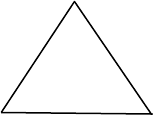
31
CONFLICT RESOLUTION CURRICULUM
Activity 4: Personal Emotions and Bodily Signals
10 minutes | Entire Class
Materials:
● Paper for each learner (optional)
● Whiteboard/Chalkboard
Activity Summary: This activity will help learners connect the previous activity back to themselves
and their own experiences. Learners will reflect on their own behaviors or emotions to become
more aware and identify areas for growth. Concepts of mindfulness, self-awareness, and self-
management will be discussed.
Steps:
1. Introduce the purpose of the activity to the entire class. Explain that they will be reflecting
silently, not talking out loud or with other learners. Learners may close their eyes to
improve their concentration.
2. As the whole class sits silently, ask learners to think of a time when they felt upset, sad, or
angry.
3. Ask the below questions, one at a time. Repeat the questions out loud as necessary:
a. Does the issue have to do with a want, need, or right?
b. How does your body feel when you are feeling like that? (Physical signals)
c. What was going through your mind? (Thought signals)
d. What did you do afterward? (Action signals: yelling, kicking, threatening, or
withdrawing)
4. Have the learners take a few minutes to reflect on the questions in their minds silently.
5. Have the learners turn their attention back to the facilitator. On a large board, draw the
following words (with each word representing a point on a triangle): Mindfulness, Self-
Awareness, and Self-Management.
Mindfulness
Self-Awareness Self-Management
6. Read the three words out loud. Explain what each term means and provide one synonym
for each to help learners remember:
a. Self-Awareness is understanding your own personality traits or flaws and being
open to improvement.
i. Synonym: Understanding
32
CONFLICT RESOLUTION CURRICULUM
b. Mindfulness is being fully present, calm, and non-judgmental before engaging with
others.
i. Synonym: Balance
c. Self-Management is using knowledge about your own emotions to create positive
change in your social interactions. By managing your own emotions you can react
to conflict better and will be less likely to make hasty decisions.
i. Synonym: Connection
7. Explain that each term is important to practice by itself, but combined the three terms are
necessary to help resolve conflicts with other people.

33
CONFLICT RESOLUTION CURRICULUM
Activity 5: Strategies for Mindful Self-Management
15 minutes | Entire Class
Materials:
● Handout 4.1: Strategies for Self-Management (one per student)
Activity Summary: The purpose of this activity is for learners to practice strategies for self-
management. Learners will explore different tools to become more calm, present, and accepting.
Learners will understand the importance of managing their emotions and behaviors before
interacting with other people around them.
Steps:
1. Introduce the activity. Explain to the learners that they will now be practicing some
strategies or tools to help manage their own emotions.
2. Give out the Lesson 4 handout to each learner. When reviewing the handout, tell learners
to think about ways they might manage their emotions.
3. Practice meditating. Tell learners to sit quietly in their seats for one minute and focus only
on their breathing. Remind them to not think about anything outside of their bodies except
inhaling and exhaling. If they are comfortable, tell learners to close their eyes to better
focus on their breathing. (3 min)
4. After one minute has passed, ask for learners to raise their hands if they found the technique
helped them feel more calm and present.
5. Next, practice positive self-talk. Instruct learners now to look at the handouts in front of
them. Have the learners read the positive self-talk section and make their own additions in
the space provided (5 min).
6. Next, hand out note cards to each learner. Explain that students will be creating their own
calming plan. Have students spend the next seven minutes thinking about and writing down
a plan of action to calm themselves down in a future instance (7 min):
a. Side A - “What do I feel?”
i. On one side, have the learners write their cues for how they know they are
feeling stressed, upset, or angry (e.g. feeling hot and tense, speaking more
quickly, impatience)
b. Side B - “What do I need? What can I do for myself?”
i. On the other side of the note card, have learners write their calming plan
or strategies for relief (three deep breaths, go for a walk, draw, journal)
Facilitator’s Note: Emphasize acceptance and validity of feelings for learners while
reiterating the importance of self-management of emotions.
34
CONFLICT RESOLUTION CURRICULUM
Activity 6: Whole Class Debrief
5 minutes | Entire Class
Materials:
● None required
Activity Summary: The purpose of this activity is to close out the session. Learners will respond
to the main questions posed at the beginning of the lesson.
Steps:
1. Have learners answer the questions asked at the beginning of the session:
a. Why is it important to identify and manage our own emotions before engaging with
others, especially during times of conflict? What role does managing emotions play
in positively managing social conflict?

35
CONFLICT RESOLUTION CURRICULUM
Stage 1 – Desired Results
ESTABLISHED
GOALS
Session 5: Active
Listening -
During this session
students will learn the
importance and
benefits of being an
active listener.
Students will learn
skills to improve their
listening skills and
practice with a
classmate. Students
will end the lesson by
reflecting on how
they can improve
their active listening
skills in the future.
Transfer
Students will be able to independently use their learning …
● To apply active listening skills in day to day life.
● To reap the benefits of active listening by making more meaningful connections
through their conversations.
● To exercise strategies to enhance active listening skills.
Meaning
UNDERSTANDINGS
● Understand skills and practices to
be an active listener.
● Understand the importance of
active listening.
ESSENTIAL QUESTIONS
● What does it mean to be an active
listener?
● How can I be an active listener?
● What are the benefits of active
listening?
Acquisition
Students will know…
● How to be an active listener.
● Listening strategies to assist in
active listening.
Students will be skilled at…
● Active listening
● Strategies to show comprehension
and attention.
Stage 2 – Evidence and Assessment
Evaluative Criteria
Assessment Evidence
Class, Group. And
Partner Participation
PERFORMANCE TASK(S):
● No assessments will be given in this lesson
OTHER EVIDENCE:
● Identifying Emotion in Conflict Activity
● Respectful Listening Activity
Stage 3 – Learning Plan
Summary of Key Learning Events and Instruction
Session Outline:
● Introduction: Telephone game (10 minutes)
● Identifying Emotion in Conflict Activity (20 minutes)
● How to be an Active Listener Discussion (10 minutes)
● Respectful Listening Activity (15 minutes)

36
CONFLICT RESOLUTION CURRICULUM
Session 5: Active Listening
Duration: 1 hour
Session Summary: In this session students will not only identify and learn strategies necessary
for active listening but also learn the importance and benefits of practicing active listening in their
day to day life. Students will engage in hands-on activities which exhibit the importance of active
listening, identify elements students should listen for when listening as well as an opportunity to
practice these skills. Students will walk away from this lesson being able to reflect on their own
listening habits and ways they can improve their active listening strategies.
Session Objectives:
By the end of this lesson, learners will:
● Understand the importance of active listening.
● Gain skills to effectively apply active listening skills in day to day life.
● Reap the benefits of active listening by making meaningful connections through their
conversations.
● To exercise strategies to enhance active listening skills.
Session Outline:
1. Introduction: Telephone game (10 minutes)
2. Active Listening in Conflict Activity (20 minutes)
3. How to be an Active Listener Discussion (10 minutes)
4. Respectful Listening Activity (20 minutes)
Materials:
● YouTube Video
o https://www.youtube.com/watch?v=t4okAfKCwRk&list=PLXChMXWLI_LIHk7
7ub7XgqZEE-fbcf8Cw&index=6
● Handout 5.1: Active Listening in Conflict Worksheet (one per student)
● Handout 5.2: Active Listening Worksheet (one per student)
● Whiteboard and Markers
● Pen/ Pencils
● Timer
● Notecards (one per student)
Pre-work for Facilitator:
● Review entire lesson before implementing
● Print out Handouts 5.1 and 5.2
● Click on the YouTube link above and ensure the video plays.
● One activity requires students to work in pairs. Think about the dynamic of your advisory
group and determining how you would like to have students pair off. (ie. have students
choose their own pairs, carefully pre-determining pairs, or selective pairs in class.)

37
CONFLICT RESOLUTION CURRICULUM
Activity 1: Introduction Telephone Game
10 minutes | Entire Class
Materials:
● None required
Activity Summary: The purpose of this activity is for students to recognize the importance of
carefully listening. Students will be able to observe how ideas and words can change if they are
not carefully listening.
Steps:
1. Instruct students to form a single file line in the classroom. Depending on the size of the
class and the classroom it might be easy to have students line up at the perimeter of the
classroom.
2. Explain the activity instructions to the students.
a. Instructions: I will whisper a sentence to the student at the beginning of the line.
The student will whisper the sentence to the next person in line, and the students
will continue to whisper the sentence until it reaches the last student. The last
student will share the sentence they heard with the rest of the class. Students are
only allowed to say the sentence once it cannot be repeated.
3. Whisper the following sentence to the first student in line. And facilitate the students to
continue whispering the sentence down the line.
a. Liya the lion lost her lunch at the library.
4. Prompt the final student to speak the sentence out loud.
5. Conclude the activity and reflect. Use the following Debrief Questions:
a. What happened to the original message?
b. Was it easy or difficult to understand? What made it challenging to understand?
Facilitator’s Note: Once the activity is done, if time permits, students can each share the sentence
which they heard and told to their classmate. This would allow students to determine how and
where the sentence changed. Also allow students to discuss the debrief questions below.

38
CONFLICT RESOLUTION CURRICULUM
Activity 2: Active Listening in Conflict Activity
20 minutes | Individual/ Class Discussion
Materials:
● Four Conflict YouTube Videos Ready in Browser
○ https://www.youtube.com/watch?v=t4okAfKCwRk&list=PLXChMXWLI_LIHk7
7ub7XgqZEE-fbcf8Cw&index=6 (Inside out, Time 3:19)
● Handout 5.1: Active Listening in Conflict Worksheet (one per student)
● Pen/ Pencil
Activity Summary: In this activity students will be watching conflicts and carefully listen and
observing for the summary of events, value or issue at the center of the conflict, feelings of
individuals, and body language used in the clip. This exercise is to introduce students to the facets
of an interaction which are important to take note of during a conversation or conflict.
Facilitator’s Note: You may also choose to find a video which is more relevant to the local
context. It is important to choose a video that shows a conflict between two or more people and
that students can examine and discuss the summary of events, values and issues at the center of
the conflict, feelings and emotions, and body language. Be sure to make adjustments to the
Instructions and examples in Step 6 accordingly.
Steps:
1. Provide each student with Handout 5.1.
2. Prompt student on the instructions of the activity below.
a. Instructions: For this activity we are going to watch a short clip from the movie
Inside Out. In this clip you will see an argument between Riley and her parents.
This clip will also show the emotions of each person as characters to give
information on the thought processes of each character. Please focus on the
conflicts occurring between Riley and her parents. I will play this video twice,
during the first viewing please complete the first two boxes summarize the events
occurring in the video, and the values and issues at the center of the conflict. During
the second viewing you will complete the second two boxes which note the feelings
each person is going through and the body language each character is exhibiting
that non-verbally help indicate their emotions.
3. The teacher will play the video clip provided above on YouTube. Please be sure Closed
Captioning (CC) is available so students can read along.
4. Once the video is played for the first time, give students 2-3 minutes to write down their
answers in the first two boxes, summary of events and values and issues at the center of
the conflict. Encourage students to work independently.
5. Play the video for the second time, then allow students 2-3 minutes to write down their
answers in the second two boxes, feelings and emotions and body language.
39
CONFLICT RESOLUTION CURRICULUM
6. As a class, prompt the students to share the answers they selected for each box. Answers
and examples are listed below but are not exhaustive.
a. Summary of Events: Riley and her parents are sitting at dinner, the mother is asking
questions to Riley about her day but it makes Riley angry. Riley’s father yells at
her for raising her voice.
b. Values and Issues at Center of the Conflict: Riley is upset, her mother is trying to
make her feel better by asking her about school, but it is only making her more
upset.
c. Feelings and Emotions: Riley is upset, rebelling, lonely, angry; Mother is worried
and concerned, Father is confused, angry, defensive
d. Body Language: Riley is hunched over her dinner, closed off, Father stands up out
of anger, Mother is non-verbally signally the father to talk to Riley, Father looks
confused
7. End the activity with the following debrief questions.
a. Debrief Questions:
i. Which listening area was hardest: facts, values, feelings or body language?
ii. Why is differentiating the four important?
(Fairfax County Public School, 2010)

40
CONFLICT RESOLUTION CURRICULUM
Activity 3: How to be an Active Listener Discussion
10 Minutes | Entire Class
Materials:
● Whiteboard and Marker
● Handout 5.2 Active Listening Worksheet (one per student)
● Pen/ Pencil
Activity Summary: During this activity you will be working with students to define and identify
practices to be a strong active listener. Students will identify their own understanding of active
listen as well as learn strategies to effectively active listen.
Steps:
1. Provide each student with Handout 5.2.
2. Ask students to think about “What does it mean to be an active listener?”
a. Probe students for their opinions on the benefits of being an active listener.
3. Write the answers on the board, and have students take notes.
4. Ask students to provide examples of signs of active listening. You can ask students:
a. What are signs of active listening?
b. How do you show someone you are listening to them?
i. Ex. Body language, asking questions, summarizing
5. Review the Big 5 for Active Listening (below) with the students. Inform students that these
practices can be used to improve their active listening skills. Have one student volunteer
read the description of each practice and have them hypothesize further examples for each.
Big 5 for Active Listening
1. Paying attention: Being an effective listener. You can do this by allowing the
speaker to finish their sentences and thoughts before speaking or speaking over
them. Listen and understand what the speaker has said before responding. Pay
attention to your body language.
Facilitator’s Note: Have students provide examples of welcoming and receptive body language.
2. Not Judging: Have an open mind. Be open to new ideas and perspectives when
active listening. Even if you have a strong opinion, good listeners will hold their
criticism, avoid arguments, or sell their points right away.
41
CONFLICT RESOLUTION CURRICULUM
3. Reflective: Do not assume you understood the speaker correctly. You can ensure
you correctly understood the speaker by paraphrasing key points.
4. Clarifying: Do not be shy about asking questions about unclear information.
Summarize and confirm you have a clear understanding of the speakers point of
view.
5. Sharing: Active listening is first about understanding the speaker, but then about
being understood as the listener. Once you listen to the speaker and have a clear
understanding of their thoughts and opinions, share your thoughts and ideas which
relate to the comments previously made.
(Center for Creative Leadership, 2019)

42
CONFLICT RESOLUTION CURRICULUM
Activity 4: Respectful Listening Activity
20 minutes | Groups of 2
Materials:
● Notecard
● Pen/ Pencil
● Timer
Activity Summary: Students will be practicing active listening skills and techniques. Students will
not only be able to practice and reflect on their own active listening skills but understand what it
feels like as a speaker to be heard with undivided attention.
Facilitator’s Note: Explain this activity is not about convincing someone of your point of view;
it is about sharing a story in order to relate to each other. Emphasizing the importance of listening
is to hear and empathize with a person’s story, understand your partner's point of view and
feelings and then to establish commonalities.
1. Pair off students in groups of two and have them situated themselves in the classroom so
they are sitting face to face at comfortable talking distance. Away from other groups so
they can focus on each other. Be sure to designate one student as Speaker 1 and one student
as Speaker 2.
2. Explain the activity instructions to students.
a. Instructions: In your pairs you will each have an opportunity to practice your active
listen skills. Speaker 1 will go first and speak for three minutes. You can speak
about anything; your favorite activity, a childhood memory, your family, what you
did over the weekend. Anything you can speak about for three straight minutes. Try
to speak about the same topic but the most important thing is that you are speaking
for the whole three minutes! Speaker 2 must not speak until the three minutes is up,
even if Speaker 1 stops speaking before the time is up you cannot speak. Once the
three minutes is up Speaker 2 will have 15 seconds to think about what they have
heard and then a minute to summarize the main points from Speaker 1’s story and
ask any clarifying questions. After the summary is done Speaker 1 will have an
opportunity to reflect on Speaker 2’s summary. Noting if anything important was
missed or misunderstood. After this is complete Speaker 2 will become the speaker
and Speaker 1 will be the listener.
Facilitators Notes: Students should note that these stories are personal between the partner groups
and not to be shared. Students should be noting what emotions were felt by the Student during the
prompt? What was the body language of the student? What were the main points? Do you have any
clarifying questions?
43
CONFLICT RESOLUTION CURRICULUM
3. After providing instructions, allow students to have a couple moments to think about what
they will speak about and ask any questions.
4. Prepare the timer and prompt Speaker 1 to begin speaking and follow the instructions above
until both students have had an opportunity to speak.
5. Ask the students the following debrief questions to reflect on the activity.
a. Debrief Questions:
i. What are some things you learned about active listening?
ii. What was difficult?
iii. How did it feel to be listened to so attentively?
iv. How did it feel to speak for 3 minutes with no interruptions?
6. Pass out a notecard to each student.
7. Instruct students to personally reflect on how they felt about the active listening strategy.
Students should write down their reflections to the following Personal Reflection
Questions.
a. Personal Reflection Questions:
i. What are your strengths as an active listener? Where did you feel like you
succeeded in this activity?
ii. What are some areas of potential growth as an active listener?
iii. List one way which you can improve your listening skills.
8. Inform students the answers on the notecard are a personal reflection and will not be shared
or turned in.
(Pennsylvania Project, 2014)
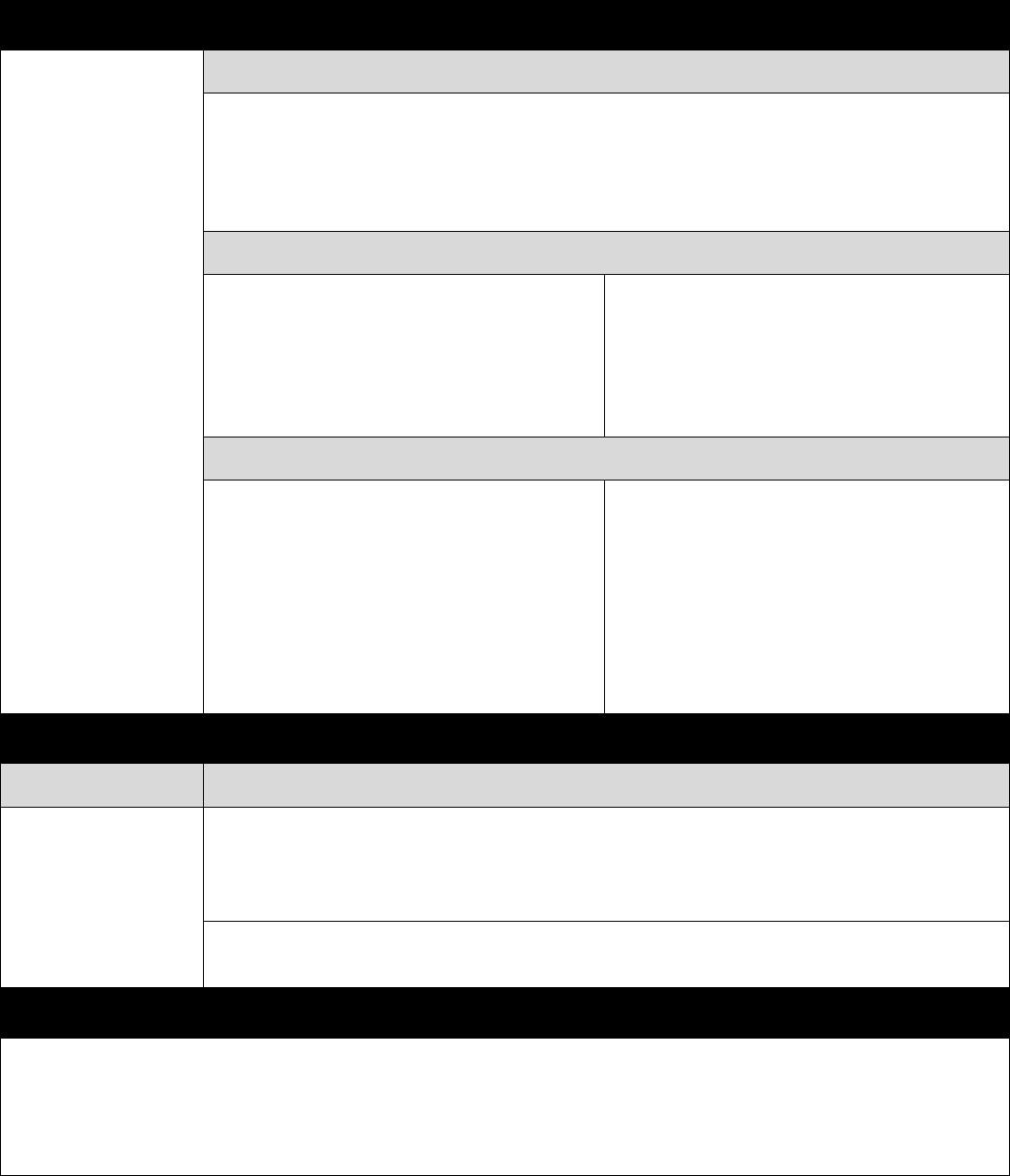
44
CONFLICT RESOLUTION CURRICULUM
Stage 1 – Desired Results
ESTABLISHED
GOALS
Session 6:
Constructive
Communication -
Students will be able
to communicate their
needs and desires
respectfully to others
in a constructive way
that promotes
peacebuilding.
Transfer
Students will be able to independently use their learning to…
● Organize their thoughts prior to communicating.
● Communicate their thoughts and feelings in a clear and unaggressive manner while
being mindful to listen to what the other person is saying.
● Train other people in the community to communicate constructively.
Meaning
UNDERSTANDINGS
Students will understand that…
Verbal and nonverbal communication skills
can help promote peacebuilding and
safeguard human dignity.
ESSENTIAL QUESTIONS
● How to organize thoughts and emotions in
order to effectively communicate to de-
escalate conflict?
● What does constructive communication
for conflict resolution look like?
Acquisition
Students will know…
● How to develop a communication agenda
for conflict resolution that upholds human
dignity.
● How to display verbal and nonverbal
communication cues to effectively resolve
conflict or tension.
● How to lead others in communicating
their own thoughts or feelings effectively.
Students will be skilled at…
● Organizing thoughts before speech or
action.
● Using “affective” statements to safely
express feelings, thoughts, or concerns.
Stage 2 – Evidence and Assessment
Evaluative Criteria
Assessment Evidence
Being able to identify
and utilize affective
statements.
PERFORMANCE TASK(S):
Identify the Types of Communication activity
Pause It and Resolve It - Strategies for Getting Organized participation
Role-Playing Effective Communication participation
OTHER EVIDENCE:
Learners are able to identify “affective” phrases and actions to communicate constructively.
Stage 3 – Learning Plan
Summary of Key Learning Events and Instruction
● Identifying Types of Communication activity
● Pause It and Resolve It - Strategies for Getting Organized activity
● Role Playing Effective Speaking activity
● Entire group discussion
45
CONFLICT RESOLUTION CURRICULUM
Session 6: Constructive Communication
Duration: 1 hour
Session Summary: This session introduces learners to constructive methods of communication
and ways to communicate effectively in peer conflict situations. First, learners will become
knowledgeable about how to define and identify the main methods of communication. Second,
learners will develop or enhance strategies for how to communicate in conflict de-escalation. Some
examples include “affective” statements, or language which begins with “I feel.” Learners will
practice skills for communicating in ways that are constructive rather than destructive.
Session Objectives:
By the end of this lesson, learners will be able to:
● Organize their thoughts prior to speaking out loud.
● Understand how nonverbal cues and tones play a significant role in communication.
● Communicate their thoughts and feelings constructively to others in a way that both
expresses their viewpoint while taking into account other people’s perceived feelings,
emotions, and thought processes.
● Lead other people in the community to communicate constructively.
Session Outline:
6. Draw My Picture Activity (10 minutes)
7. Identify the Types of Communication (10 minutes)
8. Getting Organized Before Conflict Resolution (15 minutes)
9. Strategies for Constructive Communication (20 minutes)
10. Whole Class Debrief (5 minutes)
Materials:
● 1 Large Whiteboard/Chalkboard
● 3 Flip Charts
● Post-it notes (3 colors)
● Plain paper (enough for every learner)
● Pencils or pens
● Handout 6.1: Conflict Resolution Scenario, Worksheet, and Checklist (one per student)
● Handout 6.2: Constructive Communication Role-Play (cut-out, one per student)
● Handout 6.3: “Affective” Statements (one per student)
Pre-work for Facilitator:
● Review the entire session prior to facilitating
● Place flip-chart paper in three corners of the room for Activity 2
● Cut out communication strategy cards in Activity 4
● Ensure learners receive handouts
46
CONFLICT RESOLUTION CURRICULUM
Activity 1: Draw My Picture
10 minutes | Partner Pairs
Materials:
● Paper (enough for each student)
● Pencils or markers
Activity Summary: The purpose of this activity is to help learners practice their verbal
communication and listening skills. In this activity, learners will partner up with each other. In
each pair, the first learner will take a turn drawing a picture and the second learner will have to
duplicate the picture without seeing it based on verbal instructions given by the first learner.
Steps:
1. Pair learners up into groups of two.
2. Tell the pairs of learners to sit back-to-back with their partners. Hand out sheets of paper
and pencils for drawing. Assign one learner in the pair a Number 1 and the other learner a
Number 2.
3. Introduce the purpose of the activity. Explain that learners designated in the pair as Number
1 are the Artists. Explain that Artists will draw a picture using only simple shapes and lines.
The learner in the pair designated as Number 2 is the Apprentice and cannot look while the
drawing is being made.
4. Begin the activity. When Learner Number 1 (the Artist) is done drawing, they must give
Learner Number 2 (the Apprentice) verbal directions on how to draw the picture. Learner
Number 1 (the Artist) may not look at Learner Number 2 (the Apprentice)’s work while
drawing. When the Apprentice is finished, the two players compare their drawings. (5 min)
5. Announce that learners should switch roles. The Artist should now become the Apprentice,
and the Apprentice should now become the Artist. Repeat the activity again until both
partners have had a chance to draw and instruct the other learner. (5 min)

47
CONFLICT RESOLUTION CURRICULUM
Activity 2: Identify the Types of Communication
10 minutes | Small Groups (3 groups)
Materials:
● 3 Flip Charts
● Post-it Notes (3 different colors)
● Pens or pencils
Activity Summary: The objective of this activity is for learners to demonstrate their knowledge of
the wide variety of techniques humans use to communicate and to identify these methods as
positive, negative, or neutral in others as well as themselves. Learners will become aware of helpful
versus harmful communication patterns in oral, written, and non-verbal communication.
Steps:
1. Divide the class into three groups.
2. Introduce the purpose of the activity. Assign each group to a different communication
category: oral/speech, written, or non-verbal. Have each group go to one of the
correspondingly labelled flip charts in the room. Give each group three different colors of
post-it notes. Explain that each colored post-it note means something different. Positive
ideas are green. Negative ideas are red. Neutral ideas are yellow or blue.
3. Ask the groups of learners to take ten minutes to brainstorm words or activities related to
their own category of communication. (10 min)
4. Learners will then write examples on the assigned colored post-it notes. Completed sticky
notes can be placed onto the flip chart. (see example below). (5 min)
5. Conclude the activity. As a large group, quickly look at the examples and add any additions
if necessary.
6. Now, ask learners to sit in their chairs for a silent reflection. Learners may close their eyes
if they feel comfortable. Pose the following questions to students (5 min):
a. Which kinds of communication do you use most? Does it vary by location (home
or school), mood, gender, or age?
b. Do you adjust your communication patterns when you are angry or upset or happy
or excited? What do your own positive, neutral, and negative communication
patterns look like?
7. Explain that there are many different ways of communicating. The messages we send aren’t
always clear or kind, like in the picture drawing activity.
8. Pose the following questions to learners to think about and answer at the end of the session:
a. How does constructive communication relate to the concept of human dignity?

48
CONFLICT RESOLUTION CURRICULUM
b. Why is it important to identify and regulate our communication patterns to be
respectful and kind before engaging with others, especially during times of
conflict?
Example:
Oral/Speech
Written
Nonverbal
Speaking slowly, talking fast,
speaking clearly, mumbling,
speaking loudly, talking quietly,
lecturing, laughing, crying,
shouting, yelling, singing,
whispering, gossiping, chatting,
etc.
Detailed, long, eloquent, short, curt,
snippy, clear, confusing, wordy,
hurtful, kind, honest, dishonest
Arms crossed, arms relaxed, body
turned towards person talking, body
turned away from other person, high
pitched voice, low pitched voice,
crying, laughing, smiling, frowning,
kicking, hitting, punching, hugging,
holding hands, etc.
49
CONFLICT RESOLUTION CURRICULUM
Activity 3: Getting Organized Before Conflict Resolution
15 minutes | Small Groups
Materials:
● Handout 6.1: Role-Play Scenarios, Observer Worksheet, & Conflict Resolution Checklist
Activity Summary: The objective of this “Pause It and Resolve It” role-play activity is for learners to
practice forward-thinking skills, self-management skills, and communication skills for conflict
resolution. Learners will become aware of helpful versus harmful communication patterns and the
importance of pausing to consider benefits or consequences of certain courses of action.
Steps:
1. Divide learners into groups of three or more for a role-play conflict resolution scenario.
Ask each group to choose two role players. The other learners in the group will be
observers.
2. Introduce the activity. Distribute a copy of the Role-Play Scenarios to the learners who are
taking on character roles and who will be role-playing the conflict. Distribute the Resolving
Conflict Checklist and the Observer’s Sheet to the learners who will be taking on the
observer roles on each team. Learners who take on observer roles should be careful to take
note of the others’ verbal and non-verbal behaviors.
3. Begin the activity. Learners who take on character roles should role-play the conflict, with
learners who are observing the scenarios watching. When the actors seem to be getting to
the end of their role play, the observer should say “Pause” loudly enough for the two role
players to freeze their activity. (5 min)
a. While watching the role-play scenario, the observers should answer the questions
in their handouts about the ways in which the actors interacted. These observations
will help provide specific feedback for the role play participants.
4. As a group, learners should use the observer worksheet as a prompt to brainstorm about
the specific behaviors that were observed and areas to change for improved outcomes in
the conflict. (7 min)
5. Conclude the activity and have learners return to their assigned seats. As a whole class, ask
learners to raise their hands to answer the following questions: (8 min)
a. What guidelines from the Resolving Conflict Checklist could be applied to solve
this conflict?
b. What actions during the role play could have been taken to lead to a more positive
outcome?
c. The next time you try to resolve a conflict, which guideline do you think will be
the most important one for you to follow? Why did you choose this particular
guideline?

50
CONFLICT RESOLUTION CURRICULUM
Activity 4: Strategies for Constructive Communication
20 minutes | Pairs and Entire Class
Materials:
● Handout 6.2: Constructive Communication strategy cards (cut-out, one per student)
● Handout 6.3: “Affective Phrases” (one pers student)
Activity Summary: The objective of this role-play activity is for learners to practice positive
communication strategies for conflict resolution. Learners will read two different role play
strategies to become more aware of helpful communication patterns and become skilled in
implementing the strategies in real life.
Steps:
1. Introduce the activity. Distribute one communication strategy card to each learner at
random. Distribute the Affective Phrases handout to all learners. Pair learners up with each
other.
2. Have the pairs of learners read aloud their own and their partner’s role play strategy cards.
3. Ask learners to script their own conflict scenarios in which the posed solutions fit the
situation. Create one scenario for both strategy cards. (5 minutes).
4. Ask each pair of learners to take turns acting out their scripted conflict scenario and
proposed communication solutions in front of the class, using both types of constructive
(positive) communication strategies that were given to them. (10 minutes)
a. The learners observing in the audience should try to identify the two types of
positive communication strategies that are being demonstrated. Learners should
call out which strategy they think fits the situation.
5. Repeat the role-play with different pairs of learners until all learners have participated.
6. Conclude the activity and have learners return to their assigned seats.
7. Ask learners to reflect on which solutions they found most helpful. Call on learners
“popcorn style,” if needed to facilitate sharing (5 minutes).
Facilitator’s Note: Pre-work for this activity involves cutting out the strategy cards found in
Handout 6.2 along the dotted lines.
51
CONFLICT RESOLUTION CURRICULUM
Activity 5: Whole Class Debrief
5 minutes | Entire Class
Materials:
● None required
Activity Summary: The purpose of this activity is to close out the session. Learners will respond
to the main questions posed at the beginning of the lesson.
Steps:
1. Have learners answer the questions asked at the beginning of the session:
a. How does constructive communication relate to the concept of human dignity?
b. Why is it important to identify and regulate our communication patterns to be
respectful and kind before engaging with others, especially during times of
conflict?

52
CONFLICT RESOLUTION CURRICULUM
Stage 1 – Desired Results
ESTABLISHED
GOALS
Session 7:
Empathizing with
Others -
Students will be
able to put
themselves in
another's shoes and
understand the other
person's thoughts
and feelings and
why they might feel
that way.
Transfer
Students will be able to independently use their learning to…
● Understand differing perspectives and emotions within a conflict.
● Empathically listen to others as they express their experiences.
Meaning
UNDERSTANDINGS
Students will understand that…
Everyone has similarities and differences
in their life experiences which can
influence their feelings during conflict.
ESSENTIAL QUESTIONS
What are the similarities across differing
life experiences?
Why is it important to engage with
perspectives different from your own?
What does it mean to put yourself in
someone else's shoes?
Acquisition
Students will know…
How to empathize with different
perspectives then their own.
Students will be skilled at…
Placing themselves in another's shoes
within a conflict.
Stage 2 – Evidence and Assessment
Evaluative
Criteria
Assessment Evidence
Empathetic
Listening
Being able to voice
the other
perspective
PERFORMANCE TASK(S):
Someone Else’s Shoes participation
OTHER EVIDENCE:
Students are able to effectively take on another character’s role.
Students are able to identify how someone can show empathy.
Stage 3 – Learning Plan

53
CONFLICT RESOLUTION CURRICULUM
Summary of Key Learning Events and Instruction
● Cross the Line activity
● Someone Else's Shoes Activity
● Small group discussions
● Entire group discussion
Session 7: Empathizing with Others
Duration: 1 hour
Session Summary: This session introduces students to the concept of empathy, providing them
different perspectives within conflict, and focusing on the similarities of the human experience.
The purpose of this session is for students to learn how to place themselves in another person's
shoes and to understand why others may hold a different perspective from their own. Students will
also be asked to see the similarities between them and their peers' experiences.
Session Objectives:
By the end of the session, learners will be able to:
● Demonstrate an understanding of differing perspectives within conflict
● Identify reasons why others may feel differently from themselves within a conflict
● Place themselves within the shoes of another, understanding their thoughts and emotions
within a conflict
Session Outline:
1. Cross the Line (15 minutes)
2. Small Group Discussions (10 minutes)
3. Someone Else’s Shoes (20 minutes)
4. Whole Class Debrief (15 minutes)
Materials:
● Masking Tape
● Handout 7.1 (one per student)
Pre-work for facilitator:
● Review the entire session before implementing
● Adapt the “Cross the Line” activity to include context-specific instances to relate to your
advisory group
● Develop, type, and cut out "In their Shoes" cards that relate to the context and concerns of
your advisory group

54
CONFLICT RESOLUTION CURRICULUM
Activity 1: Cross the Line
15 minutes | Entire Class
Materials:
● Masking Tape
Activity Summary: The purpose of this activity is to help the group develop unity through
understanding the similarities and differences between them. Students will become aware that they
are not alone in their anxieties, fears, and/or challenges and that there are differences between each
other's experiences within those challenges. In this activity, students will cross the line based on
their experiences with a series of statements read aloud, exploring their emotions as they witness
theirs and their peers' reactions.
Facilitator's Note: Be careful not to be judgmental or shaming in this activity. Everyone in your
advisory should have a reason to cross the line. Make sure students understand the rules of the
activity, ensuring a safe and silent space for students to experience and express their feelings.
Steps:
1. Introduce the activity. Explain the rules for the activity before beginning:
a. This activity will be conducted in complete silence (no laughing or talking).
b. All students need to be respectful of any feelings that might come up because of
this activity to make sure this is a safe space.
2. Ask students to move behind the masking tape line on the floor, all facing the same
direction in a single line.
3. Explain how to do the activity:
a. “I’m going to call out an experience and if you have had that experience, please
cross the line and turn around to face the students on the other side of the line. If
you do not feel comfortable crossing the line, even though you are part of that
group, that’s okay. You can stay right where you are and notice any feelings you
are having.”
b. For each experience you call out, students who have had that experience will cross
the line. They will then turn around to face the students who have not crossed the
line. When you tell the group that crossed the line to return, they will return to their
original places on the other side of the tape, so that the entire group is standing
together once more.
4. Begin the activity. After each of the “cross the line” experiences, you will:
a. Pause until the students who have crossed the line have turned to face the other
students.
b. Say “Now notice how it feels to cross the line and notice how it feels to watch other
people cross the line (pause). Notice who is with you (pause). Notice who is not
with you (pause).”
c. Ask everyone to return together behind the masking tape.

55
CONFLICT RESOLUTION CURRICULUM
d. Repeat for each experience.
List of possible experiences: (adapt these or create your own to better address the class)
● “Now, cross the line if you have ever been teased or called a bad name or made fun of.”
● “Cross the line if you’ve ever felt left out because you’re a girl.”
● “Cross the line if you’ve ever been called a mean name because you are a girl.”
● “Cross the line if you’ve ever felt left out because you’re a boy.”
● “Cross the line if you’ve ever been called a mean name because you are a boy.”
● “Cross the line if you, or someone you care about, has ever been judged or teased because
of the color of your (or his/her) skin, the town you are from, or the language that you
speak.”
● “Cross the line if you or anyone of your family members or friends has a disability.”
● “Cross the line if you’ve ever been told you shouldn’t cry, show your emotions, or be
afraid.”
● “Cross the line if you’ve ever felt alone, unwelcome, or afraid.”
● “Cross the line if you or someone you care about has ever been teased or made fun of for
wearing glasses, braces, a hearing aid, or for the clothes you wear, your height, your weight,
your complexion, or the size or shape of your body.”
● “Cross the line if you’ve ever felt pressure from your friends or an adult to do something
you didn’t want to do and felt sorry or ashamed afterward.”
● “Cross the line if someone’s ever been mean to you and you’ve been reluctant or too afraid
to say anything about it.”
● “Cross the line if you’re ever stood by and watched while someone was hurt and said or
did nothing because you were too afraid.”

56
CONFLICT RESOLUTION CURRICULUM
Activity 2: Small Group Discussions
10 minutes | Small Groups (3-5)
Materials:
● None required
Activity Summary: Students will break into groups and discuss any new realizations they had
during the previous activity.
Facilitator's Note: During the small group discussions, it is helpful to walk around and join
various groups asking probing questions as needed. You could ask questions such as “What did
you learn about yourself/others from this activity?” “What did you learn from this activity that
can help us make our school and communities more compassionate?”
Steps:
1. Split the students into small groups of 3-5 people.
2. Ask each group to discuss what they learned from the activity. (5 minutes)
a. Feelings experienced
b. New realizations
c. Overall takeaways
d. How their previous life experiences may affect their responses in conflicts
3. Invite each group to share out 1-2 things they learned from the activity with the entire
advisory circle.
a. Affirm students in their learning.
4. Explain that in order to have empathy, we must first recognize that all of our experiences
may be different, but that each of us has felt similar feelings. Also, explain that these
experiences can influence how we feel and act within a conflict setting.

57
CONFLICT RESOLUTION CURRICULUM
Activity 3: Someone Else’s Shoes
20 minutes | Pairs
Materials:
● Handout 7.1 (one for each student)
● Timer
Activity Summary: Students will now have a chance to practice empathizing with others. Each
student will receive a role card and be required to act out that role for the rest of the activity.
Students will pair up and practice empathetically listening to one another tell about their
experiences. After switching off, students will discuss together how they knew each other was
showing empathy and what they wished their partner would have done differently.
Facilitator's Note: The role card scenarios which are provided should be edited to address
common concerns or experiences relating to the real-life experiences of your advisory group.
Consider giving students assigned character cards that are purposefully very different from their
own life experiences. If needed, you can do a role-play for the class as an example before they
begin.
Steps:
1. Introduce the activity and explain the instructions. The purpose of the activity is to practice
all that has been learned about active listening, effective communication, and now
empathetic response.
a. Empathetic response involves making eye contact, not interrupting, and asking
follow-up questions.
2. Each student will draw one character card to role-play for the rest of the activity.
a. Afterward, partners will discuss how they saw their partner show empathy, how it
made them feel, and what they wish they would have done differently.
3. Provide some time for the students to read through the scenario on the card they chose.
Emphasize the need to try and feel what their character would feel.
a. You can invite students to ask themselves questions such as:
i. How would I feel in this situation?
4. Invite students to begin the activity (3-4 minutes for each character). Ask students to find
a partner. In pairs, students will now take turns sharing about their situations and practice
being empathetic as they listen to each other’s story.
a. Ask students to discuss with their partners how they showed empathy, how it made
them feel, and what they wished their partner would have done differently while
listening. They can use statements like, “I could tell that you really cared because
you asked me how I felt.”
b. Request that each student take off their left shoe and switch it with their partner to
wear during the activity.
5. Conclude the activity. Have the partners switch back their shoes.
58
CONFLICT RESOLUTION CURRICULUM
6. Gather students together and have everyone stand up. Go around the room and have the
students share something they learned about practicing empathy, sitting after they share. If
someone else shares their thoughts, they can sit down. Go around the room until no one is
left standing.

59
CONFLICT RESOLUTION CURRICULUM
Activity 4: Whole Class Debrief
15 minutes | Entire class
Materials:
● None required
Activity Summary: Gather together the class to discuss overall takeaways about what they learned
and felt throughout the activities. The Facilitator will help students understand why having
empathy is important and how they can use this new skill outside of class.
Facilitator's Note: It is very important that students are able to make the connections between
what has been learned and how they can apply it moving forward. Help students to walk away
feeling empowered to practice greater empathy for those who are different from themselves,
especially in times of conflict.
Steps:
1. Gather students into a circle.
2. Start the discussion by asking the class to chat about why it is important to have empathy
for others, especially those who are different from themselves. Throughout the discussion
continue to probe the group with questions such as:
a. What does it mean to put ourselves in someone else’s shoes?
b. How can having empathy help me to resolve conflicts?
c. How do other people’s life experiences affect how they feel in conflicts?
d. How can you advocate for others who hold different perspectives from your own?
3. Finish the discussion by inviting each student to write down two things they have learned
that they would like to share with someone else outside of their advisory group and invite
them to share it.

60
CONFLICT RESOLUTION CURRICULUM
Stage 1 – Desired Results
ESTABLISHED
GOALS
Session 8:
Human Rights
and Conflict
Analysis -
Students will be
able to identify,
analyze, and
present
cooperative
solutions to
conflicts.
Transfer
Students will be able to independently use their learning to…
● Identify conflict in their school, communities, and country.
● Analyze conflicts from multiple perspectives.
● Create cooperative solutions for the conflict.
Meaning
UNDERSTANDINGS
Students will understand that…
● There is no one right way to
solve a conflict.
● They can be changemakers
in the conflicts that
surround them.
ESSENTIAL QUESTIONS
How are conflicts solved?
How can conflict resolution skills
help me understand conflicts in my
own life?
Acquisition
Students will know…
● How to apply conflict
resolution skills to analyze
conflicts.
● How to problem solve in a
group setting.
Students will be skilled at…
● Understanding different
perspectives in a conflict.
● Innovating solutions to
conflicts within their own
life.
Stage 2 – Evidence and Assessment
Evaluative
Criteria
Assessment Evidence
Solution
Presentations
PERFORMANCE TASK(S):
Solution presentations
OTHER EVIDENCE:
Students are able to look at both sides of the conflict.
Students are able to present cooperative solutions without taking sides in
the conflict.
Stage 3 – Learning Plan

61
CONFLICT RESOLUTION CURRICULUM
Summary of Key Learning Events and Instruction
● Conflict Brainstorm – Snowball Activity
● Analyzing Conflicts – Positive vs. Negative; conflict styles; empathizing with both
sides; solution ideas; what can we do
● Solution Presentations
62
CONFLICT RESOLUTION CURRICULUM
Session 8: Human Rights and Conflict Analysis
Duration: 1 hour
Session Summary: This session will help students to apply all that they have learned throughout
the Conflict Resolution unit. In small groups, students will identify, analyze, and design
cooperative solutions to conflicts within their school, communities, and/or country. Students will
then present their conflicts and solutions to the class.
Session Objectives:
By the end of the session, learners will be able to:
● Recognize conflicts in their own lives
● Analyze conflicts from multiple perspectives
● Design and explain cooperative solutions to conflicts
Session Outline:
1. Snowball Brainstorming (5-8 minutes)
2. Analyzing Conflicts (25 minutes)
3. Group Presentations & Debrief (25-30 minutes)
Materials:
● Handout 8.1 (one per student)
● Handout 8.2 (one per group)
● Whiteboard/Chalkboard
● Computers
● Printers
● Posterboard (one per group)
● Pens/pencils
● Markers
● Student Journals
Pre-work for facilitator:
● Print enough of both worksheets for your advisory groups to fill out.
● Adapt the conflict prompt topics to fit the experiences of your advisory groups, if
necessary. These prompts should be topics in relation to human rights found within the
African Charter of Human and People’s Rights.
● Take some time to identify reliable online sources for analyzing any conflicts you feel
students may pick.

63
CONFLICT RESOLUTION CURRICULUM
Activity 1: Snowball Brainstorm
5-8 minutes | Entire Class
Materials:
● Handout 8.1
● Pens/Pencils
● Whiteboard/Chalkboard
Activity Summary: Students will brainstorm together conflicts that exist either in their school,
community, and/or country and write them on the worksheets. They will then crumple their papers
and throw them into the middle. The advisors will then write up the ideas and assign groups to a
topic for the analysis activity.
Facilitator's Note: It is important, as the facilitator for this activity, to assign conflicts that will
allow students to challenge themselves, while still respecting the sensitivity that some conflicts
may bring. Make sure to emphasize that students are not to take sides on who is right or wrong
within the conflict, but rather to analyze both sides neutrally. You may select different topics
then the suggested below from the African Charter for Human and People’s Rights.
Steps:
1. Briefly remind students about the African Charter for Human and People’s Rights.
Describe what it is and what it does, etc.
2. Write the conflict prompts, pulled from the Charter, on the board in front of the class. See
suggested topics below:
a. Discrimination Against Women
b. Freedom to Practice Religion
c. Ethnic Discrimination
d. Environmental Rights
3. Introduce the activity. Ask students to fill out the worksheets with examples of current
conflicts taking place either in their school, communities, or country. As a Facilitator, you
may need to provide a few examples for the students. Once finished writing, students can
crumple their papers. *Students should not put their names on the paper.*
4. Count to three and have all the students throw their papers in the middle of the circle.
5. Pick up a few of the crumpled papers and write them up on the board under the prompt
topic they belong to.
6. Split the class into groups of 3-5 students and invite the students to sit with their groups.
7. Assign each group to a conflict on the board. You can have groups select their own if you
wish.

64
CONFLICT RESOLUTION CURRICULUM
Activity 2: Conflict Analysis
25-30 minutes | Small Groups
Materials:
● Handout 8.2
● Pens/Pencils
● Computers
● Printer (if not accessible, students can draw an image)
● Markers & Posterboard (if necessary)
Activity Summary: Student groups will research their assigned conflicts and fill out the Solution
Worksheets together. They will then prepare a brief presentation with a representative image to
give in front of the class.
Facilitator's Note: During this activity, visit each group during their researching process. Make
sure to help students critically think about different sides to the conflict. Answer any questions
and if they are researching the conflict online, make sure to help them find reliable sources to
pull information from.
Steps:
1. Hand out solution worksheets to each group and instruct them on the activity. Explain that
students will research and discuss the conflict and fill out the sheet. Students should focus
on producing innovative ways to cooperatively solve them.
2. All students will prepare a 3-5 minute presentation to give to the class. Students will also
select an image to represent their solution as part of the presentation.
3. Invite students to begin researching. Answer any questions they may have.
4. Circle the room and sit in on different groups to make sure to answer any questions.
Image Example:
- Conflict: Girls aren’t being allowed to play on the school football team
- Solution: Draft a petition and collect supporting signatures to give to the coach in asking
him to allow the girls to try out for the team.

65
CONFLICT RESOLUTION CURRICULUM
Activity 3: Conflict Presentations & Debrief
20-25 minutes | Entire Class
Materials:
● Timer
● Student Journals
● Pens/Pencils
Activity Summary: Students will present their conflicts and solutions for the class. The class will
have an opportunity to ask questions and provide any other ideas they think could help resolve the
conflicts. At the end of the activity, the whole class will debrief on the capacity of each student to
be a changemaker within their community and country. Students will take some time to write down
their overall learnings from the unit and what they will do moving forward to lessen conflict in
their lives.
Facilitator's Note: The debriefing for the class is very important. This debrief should be
thought-provoking and engaging to allow students to connect everything they have learned
throughout the unit and know how to apply those learnings moving forward in their lives.
Steps:
1. Ask all students to return for the presentations.
2. Invite a group to come forward and present their conflict and solution (2-3 min each). After
each presentation, allow students to ask any questions they may have.
3. Repeat with each group. Once every group has finished, ask students to pull out their
journals and a writing utensil.
4. Set a timer for 5 minutes and invite the students to write down:
a. 1) Their biggest takeaways from the entire Conflict Resolution unit
b. 2) Actions they will take moving forward.
Students can answer questions such as…
○ How has their perspective on conflict changed?
○ What realizations have they had about themselves in conflict?
○ What skills have they learned?
○ How has what they have learned influenced their relationships at school and in the
community?
5. Invite anyone who feels comfortable to share out what they wrote with the class.
6. Emphasize that now the students have learned skills and gained new perspectives. Because
they have done this, they can be changemakers, wherever they may be, as they apply all
they have learned to navigate the many conflicts that are existing and will exist in their
lives, and the lives of others.

2
Handouts for Conflict Resolution Unit
Appendix:
1. Session 1: Introduction to Conflict Resolution
a. Handout 1.1 for Activity 1: Conflict Role-Play Script p. 3
i. One copy should be provided to each student
b. Handout 1.2 for Activity 2: Defining Conflict Note Taking Sheet p. 4
i. One copy should be provided to each student to take notes
c. Handout 1.3 for Activity 3: Conflict T-Chart Handout p. 5
i. One copy should be provided to each student
2. Session 2: Know Your Own Management Style
a. Handout 2.1 for Activity 2: Conflict Management Style Survey p. 6-8
i. One copy should be provided to each student
3. Session 3: Learning to Identify Conflict Management Styles & Creating Positive Outcomes
a. Handout 2.1 for Activity 1: Conflict Management Style Survey
i. Hand back out from last class
b. Handout 3.2 for Activity 3: Can You Guess the Style? p. 9
i. One copy should be provided to each student
4. Session 4: Managing Emotions
a. Handout 4.1 for Activity 5: Strategies for Mindful Self-Management p. 10-11
i. One copy should be provided to each student
5. Session 5: Active Listening
a. Handout 5.1 for Activity 2: Active Listening in Conflict Worksheet p.12
i. One copy should be provided to each student
b. Handout 5.2 for Activity 3: Active Listening Note-taking Sheet p.13
i. One copy should be provided to each student
6. Session 6: Constructive Communication
a. Handout 6.1 for Activity 3: Conflict Resolution Scenario, Worksheet, & Checklist p. 14-16
i. One copy should be provided to each student
b. Handout 6.2 for Activity 4: Constructive Communication Role-Play p. 17-18
i. One copy should be provided to each student
c. Handout 6.3 for Activity 4: “Affective” Statements p. 19
i. One copy should be provided to each student
7. Session 7: Empathizing with Others
a. Handout 7.1 for Activity 3: In Their Shoes Character Cards p. 20
i. Print 2 sheets if there are more than 12 students
8. Session 8: Human Rights and Conflict Analysis
a. Handout 8.1 for Activity 1: Conflict Snowball p. 21-22
i. One copy should be provided to each student
b. Handout 8.2 for Activity 2: Conflict Analysis p. 23
i. One copy should be provided to each student

3
Handout 1.1: Conflict Role-Play Introduction Activity Script
A: “I was right in front of the goal! Why didn’t you pass me the ball!?”
B: “ The coach told me to shoot the ball!”
A: “I was right in front of the goal! Why didn’t you pass me the ball!?”
B: “ The coach told me to shoot the ball!”

4
Handout 1.2: Defining Conflict Note Taking Sheet
What is conflict? How would you define it?
Negative Responses to Conflict
Positive Responses to Conflict
Who is the conflict between?
______________
Definition:
Example:
______________
Definition:
Example:

5
______________
Definition:
Example:
______________
Definition:
Example:
Handout 1.3: Conflict T-Chart Handout
Group Members:
_____________________________________________________________
Circle Conflict Type:
Within People Between People Within Groups Between Groups
Description of Conflict:
__________________________________________________________________
__________________________________________________________________
__________________________________________________________________
__________________________________________________________________
Positive Conflict Resolution
Negative Conflict Resolution

6
1-
2-
3-
1-
2-
3-
Handout 2.1: Conflict Management Styles Survey
Please CIRCLE ONE response that best describes you. Be honest, this survey is designed to help you learn
about your conflict management style. There are no right or wrong answers!
Name ________________________ Date _____________________
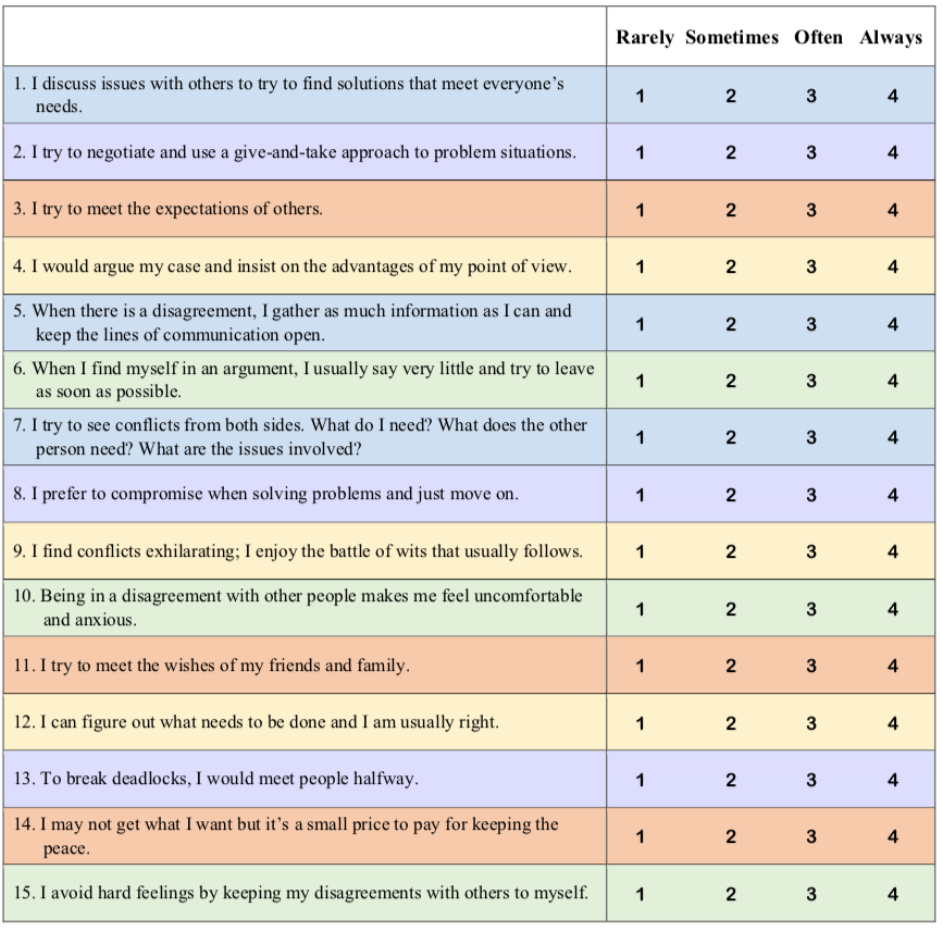
7
Source: Reginald (Reg) Adkins, Ph.D., Elemental Truths. http://elementaltruths.blogspot.com/2006/11/conflict-
management-quiz.html
Scoring the Conflict Management Styles Survey
As stated, the 15 statements correspond to the five conflict management styles. To find your most
preferred style, total the points for each style. The style with the highest score indicates your most
commonly used strategy. The one with the lowest score indicates your least preferred strategy.

8
However, all styles have pros and cons, so it’s important that you can use the most appropriate
style for each conflict situation.
Style Corresponding Statements Total:
Competing (questions 4, 9, 12): ___________
Avoiding (questions 6, 10, 15): ___________
Collaborating(questions 1, 5, 7): ___________
Accommodating (questions 3, 11, 14): ___________
Compromising (questions 2, 8, 13): ___________
My preferred conflict management style is: _______________________
Brief Descriptions of the Five Conflict Management Styles
Keep in mind that one style of conflict management is not necessarily better than another; each
style has pros and cons, and each can be useful depending on the situation. This assessment is
intended to help you identify your typical response to conflict, with the goal that when you
encounter future conflicts, you will be aware of not only your instinctive reaction, but also the pros
and cons of that reaction for the specific situation. Furthermore, you will also be aware of the other
styles of conflict management that you could draw on to resolve the situation, if one of the other
styles is more appropriate for the current situation.
Lion (Anbesa) Collaborating
Lions highly value both their goals and their relationships. They view conflict as a
problem to be solved and seek a solution that achieves both their goals and the goals
of the other person. Lions see conflicts as a means of improving relationships by
reducing tensions between two persons. They try to begin a discussion that identifies
the conflict as a problem, and strive to resolve tensions and maintain the relationship by seeking
solutions that satisfy both themselves and the other person.
Strengths:
Weaknesses:
Turtle Avoiding
Turtles tend to value avoiding confrontation more than either their goals or relationships. They often find
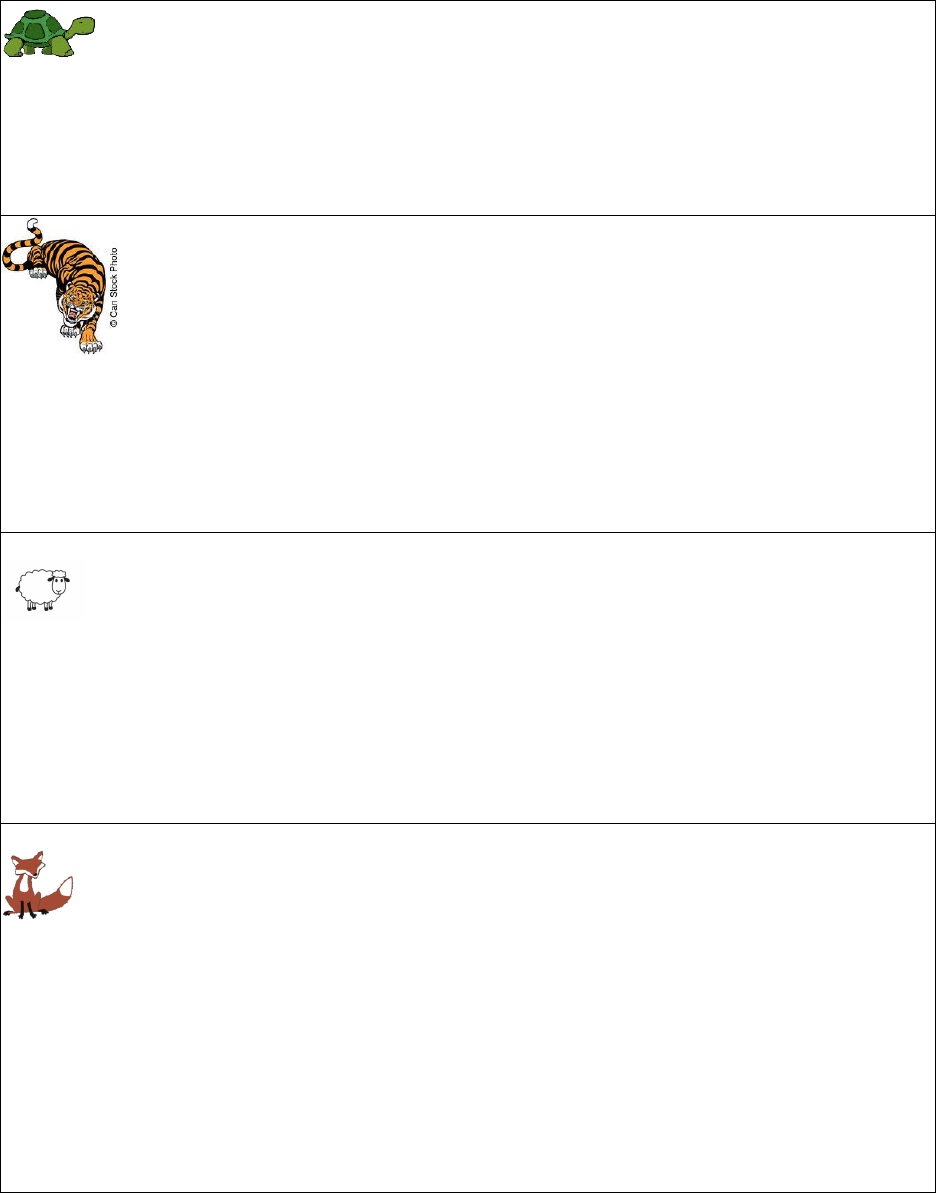
9
it easier to withdraw from a conflict than to face it. This might even include completely
giving up relationships or goals that are associated with the conflict.
Strengths:
Weaknesses:
Tiger (Neber) Competing
Tigers typically value their goals over relationships, meaning that if forced to choose, they
would seek to achieve their goals even at the cost of the relationship involved. Tigers are
typically more concerned with accomplishing their goals than with being liked by others.
They might try to force opponents to accept their solution to the conflict by overpowering
them.
Strengths:
Weaknesses:
Sheep (Bege) Accommodating
Sheep typically value relationships over their own goals; if forced to choose, sheep will often
sacrifice their goals in order to maintain relationships. Sheep generally want to be liked by
others, and prefer to avoid conflict because they believe addressing it will damage
relationships. Sheep try to smooth over conflict to prevent damage to the relationship.
Strengths:
Weaknesses:
Fox (Kebero) Compromising
Foxes are moderately concerned with both their goals and their relationships with others. Foxes
typically seek a compromise; they give up part of their goals and persuade the other person in a
conflict to give up part of their goals. They seek a conflict solution in which both sides gain
something; the middle ground between two extreme positions. They are willing to sacrifice part of their
goals in order to find agreement for the common good.
Strengths:
Weaknesses:
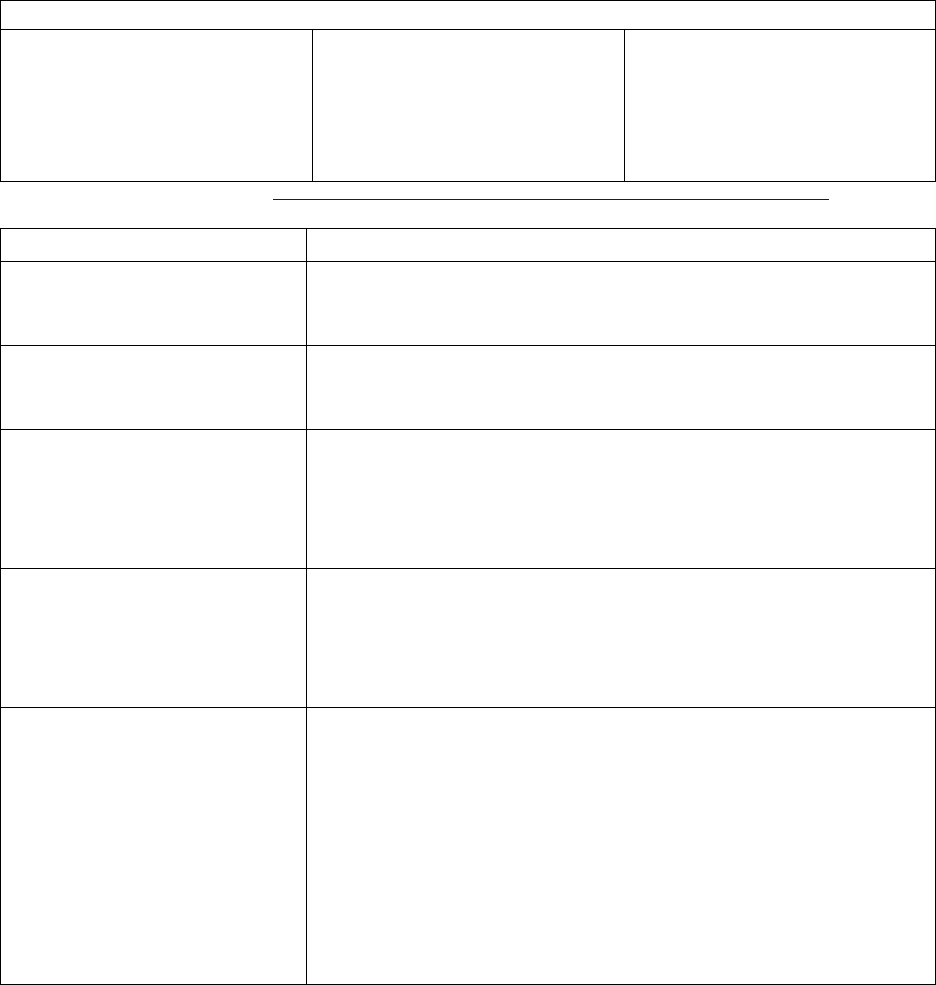
10
Handout 3.1: Get Ready to Act!
Directions:
● Write down the conflict scenario you chose and the conflict management style the teacher
assigns in the spaces below.
● Answer the questions on this sheet to help you plan your skits.
Conflict management style cheat sheet
Avoiding: “If we ignore or
don’t think about the problem
it will go away. I don’t want
to think about the issue or
deal with the conflict.”
Accommodating: “Your
needs are more important
than my needs. I’ll give up
what I want so that you can
get what you want.”
Competing: “I need to win.
I’m right and you’re wrong.”
Table inspired by Dr. Rachel Tustin (link: https://study.com/academy/lesson/conflict-resolution-activities-for-middle-school.html)
Skit Planning
Our conflict management
style is…
Our conflict scenario is…
The characters in our
conflict are…
Our characters are in
conflict because…
Characters with our
conflict management style
will act/do ______________
during our conflict….
Now Plan Your Skit!!!!!!

11
Handout 4.1: Mindful Self-Management Exercises
To Use In The Moment
*Star* the exercises that are most helpful to you
Breathing
Intentional breathing is a helpful way to bring us to the present.
Three Conscious Breaths:
1. Breathe in deeply.
2. Hold your breath for 3-4 seconds.
3. Slowly exhale.
4. Repeat for three full breaths.
Deep Breathing:
1. Breathe in deeply.
2. Notice the air in your nose.
3. Breathe out slowly.
4. Notice the air out of your mouth.
Breathing to Calm Down:
1. Breath in for a count of 4 seconds.
2. Breath out for a count of 6 seconds.
Grounding
Becoming aware of our senses can be helpful in bringing us back to the present.
Simple Grounding Technique:
1. Place both feet flat on the floor.
2. Lean back into your chair, and make note of the feeling of the chair underneath you.
3. Place your hands in your lap.
4. Notice the way your feet feel in your shoes and your shoes feel on the floor.
5. Notice the way your hands feel in your lap.
6. Notice the way the air feels in your nose.
7. Recognize yourself as reoriented to the “here and now.”
Four Senses Grounding Exercise:
1. In your mind, notice 1 thing you see in the room.
2. In your mind, notice 1 thing you can feel (“my feet on the floor” or “the air in my
nose”).
3. In your mind, notice 1 thing you hear (“people playing outside”).
4. In your mind, notice 1 thing you can smell.

12
Imagery
Imagining a calm scenario is a helpful way to make us feel more present, regulated, and
accepting.
Flowing River:
1. Visualize a fast flowing river in your mind.
2. Imagine the currents and ripples in the river, which symbolize your stressful state of
being.
3. Imagine the currents and ripples gently subsiding as the river gradually grows calmer
and the water moves more slowly.
4. As the river begins to move more slowly in your mind, imagine the stress flowing
away and visualize clarity and peace of mind.
Teff (Wheat) Field:
1. Visualize a field with long blades of teff blowing on a clear, sunny day.
2. Imagine you are sitting in the field. Feel the breeze and the sun on your skin.
3. Visualize the peace and tranquility that the field represents.
4. Bring yourself back to the present, carrying with you feelings of tranquility and peace.
Positive Self Talk
Communicating with ourselves can help us feel more regulated and accepting.
Example Self-Talk Phrases:
● I accept the things I cannot control.
● I am here to listen.
● I always give my best effort and that is good enough.
● I am smart, confident, and capable.
● I see the best in other people.
● I accept this situation for what it is.
● I can slow down, observe, and ask questions before reacting.
● I am organized and I know what I need to do.
● I accept the choices of other people.
● I am learning and growing.
Add Your Own:
●
●
●

13
Handout 5.1: Active Listening in Conflict Worksheet
Name:___________________________ Date: _________________
Instructions: The teacher will play a video about a conflict. During the first viewing
of the video answer the question in the top two boxes. After the second viewing,
complete the second two questions.
Summarize the events which occurred in
the video.
What were the values and issues at the
center of the conflict?
What were the emotions or feelings of the
people involved in the conflict?
What body language or non-verbal
communication was portrayed?
Activity Reflection Questions: As a class you will discuss…
● Which listening area was hardest: facts, values, feelings or body
language?
● Why is differentiating the four important?

14
Handout 5.2: Active Listening Worksheet
Name: _______________________ Date:_______________
What does it mean to be an active listener?
What are signs of active listening?
______________________________________________________________________________
1. Paying Attention: Being an effective listener. You can do this by allowing the speaker to
finish their sentences and thoughts before speaking or speaking over them. Listen and
understand what the speaker has said before responding. Pay attention to their body
language and well as your own.
1. Not Judging: Have an open mind. Be open to new ideas and perspectives when active
listening. Even if you have a strong opinion, good listeners will hold their criticism, avoid
arguments, or sell their points right away.
1. Reflective: Do not assume you understood the speaker correctly. You can ensure you
correctly understood the speaker by paraphrasing key points.
1. Clarifying: Do not be shy about asking questions about unclear information. Summarize
and confirm you have a clear understanding of the speaker’s point of view.
1. Sharing: Active listening is first about understanding the speaker, but then about being
understood as the listener. Once you listen to the speaker and have a clear understanding
of their thoughts and opinions, share your thoughts and ideas which relate to the comments
previously made.
(Center for Creative Leadership, 2019)

15
Handout 6.1: Role-Play Scenarios (Part 1)
Meleak:
Your attitude: You are in the same class as Aida and have to talk to Aida on a daily basis, but you
find her annoying. Aida’s paperwork is sloppy, and it is difficult to work on group projects
together. Every time you ask for Aida to contribute more to the group project, the answer is no.
You need to finish the school project in a timely manner, and that means getting all of the
components of the project completed. The teacher doesn’t care about the difficulty of working
together in groups for school.
Your behaviors: Interrupt Aida as much as possible. Show your opinion that Aida is annoying in
your nonverbal communication.
The facts: Students need to complete school projects on time. The teacher will not accept any
project that is turned in after 3:30 PM on Wednesday.
Aida:
Your attitude: You are a student at school and have to deal with your classmate, Meleak, on a daily
basis, but you find him annoying. You find Meleak very difficult to work with. You consider him
too strict and someone who obsesses over unimportant details. School projects are always turned
in after the cutoff time, and Meleak makes impossible demands. You don’t set the project deadline,
you just follow it.
Your behaviors: Talk about your opinions and feelings without backing them up with facts. Show
your resentment of the way Meleak treats you.
The facts: You cannot turn in assignments before 3:30 P.M. due to the fact that your mother
requests that you go home to complete chores after school. It takes an hour to complete the chores.
You can turn in the project by 4:30 P.M. when you are finished.
16
Handout 6.1: Observer’s Worksheet for Role-Play Scenarios
(Part 2)
INSTRUCTIONS
Observe the role-play scenarios. Answer the following questions about the way the participants
interacted. Your observations will help provide specific feedback for role-play participants.
1. How successful were the role players in identifying the real problem?
2. Comment on how listening behaviors made it easier (or more difficult) to resolve the conflict.
3. How did nonverbal communication affect the role players’ ability to resolve the conflict?
4. How do you think the interaction you observed would affect the working relationship between
the two people involved?
5. What advice do you have for the participants about resolving conflict?
17
Handout 6.1: Resolving Conflict Checklist (Part 3)
❏ Ask questions to draw out the other side of the conflict.
❏ Listen without judging.
❏ Avoid interrupting, blaming, and arguing.
❏ Give periodic feedback to check understanding.
❏ Ask for feedback to check understanding of your viewpoint.
❏ Ask for commitment to working out a solution.
❏ Set goals, create an action plan, and follow up on your solution.
18
Handout 6.2: Constructive Communication Role Play
**Cut the definitions found below on the dotted lines. Distribute them to students at
random**
----------------------------------------------------------------------------
1. "I" MESSAGES: State the feelings and thoughts you are having at the time of communication.
"I feel frustrated when you tell me to wait for you after class and then you are not there."
"I would like you to tell me when you are going to be late."
This type of statement is good because it lets you be responsible for your own thoughts and feelings
without blaming the other person.
----------------------------------------------------------------------------------------
2. CLARITY: This involves saying what you mean. People sometimes say one thing but mean
something different. This only confuses the person with whom you are communicating. For
example, "I hope you had a great time yesterday with all of your other friends!" is not the best way
to state your feelings. A better way to communicate your true meaning would be to say, "I felt
badly yesterday when I heard you invited everyone but me to eat lunch with you." This way there
is no second guessing what the message means.
----------------------------------------------------------------------------------------
3. TIMING: Select a good time to do your important communicating. An example of bad timing
is the daughter who begins telling her father what a bad day she had at school before her father has
even had time to change out of his work uniform upon coming home. Another example is the son
who wants to have a conversation with his mother about a problem at school while she cooks
dinner. A good way to tell if the timing is appropriate is to look for nonverbal messages as well as
verbal messages. It is also important to let the person who wants to communicate with you know
if the time is bad for you. You might say, "This is a bad time for me right now. Can we sit down
right after dinner when things are more settled?"
----------------------------------------------------------------------------------------
4. ASKING QUESTIONS: People seldom say everything the first time. Collecting more
information helps the speaker feel like you are listening and trying to understand.
"Why do you think that Buruk doesn't like you?" "What did Buruk say to you?"
"Where were you when your friends left you?"
----------------------------------------------------------------------------------------
19
----------------------------------------------------------------------------------------
5. REFLECTIVE LISTENING: Reflecting is when the listener repeats back the same thoughts or
feelings the speaker is experiencing. When the listener accurately reflects the speaker’s thoughts
or feelings, the speaker then knows he or she is being understood.
"Are you saying that you want to quit school?"
"You seem to be feeling angry about that."
If the listener is wrong in his or her interpretation of the statement the speaker can restate or explain
his or her feelings in a different way.
----------------------------------------------------------------------------------------
6. RESPECT AND CONSIDERATION: One sure way of ending good communication is by being
critical or judgmental. Everyone wants to be shown respect. No one wants to be made to feel
foolish or put down. It is important to respect the other person's point of view even if it is different
from yours. Sometimes we do not understand why the person feels the emotion they feel. In these
cases it is important to allow the person to express his or her emotions even when you do not agree
or understand.
----------------------------------------------------------------------------------------
7. AVOIDING INTENSE ANGER: Sometimes we become too emotional to communicate
effectively. Shouting, name calling, and physical expressions of anger harm relationships and
create fear. If you find yourself in this type of situation it is best to be honest and tell the other
person you are too upset to talk at that time.
"I am too angry to talk about this right now. I'm going for a walk and we can talk when I get back."
"If I say anything right now, I'll be sorry. I'm not in control of my emotions. Can we talk about this
later?"
Be sure to keep your word and communicate as soon as you can do so in a constructive way.
----------------------------------------------------------------------------------------
20
Handout 6.3: Affective Communication
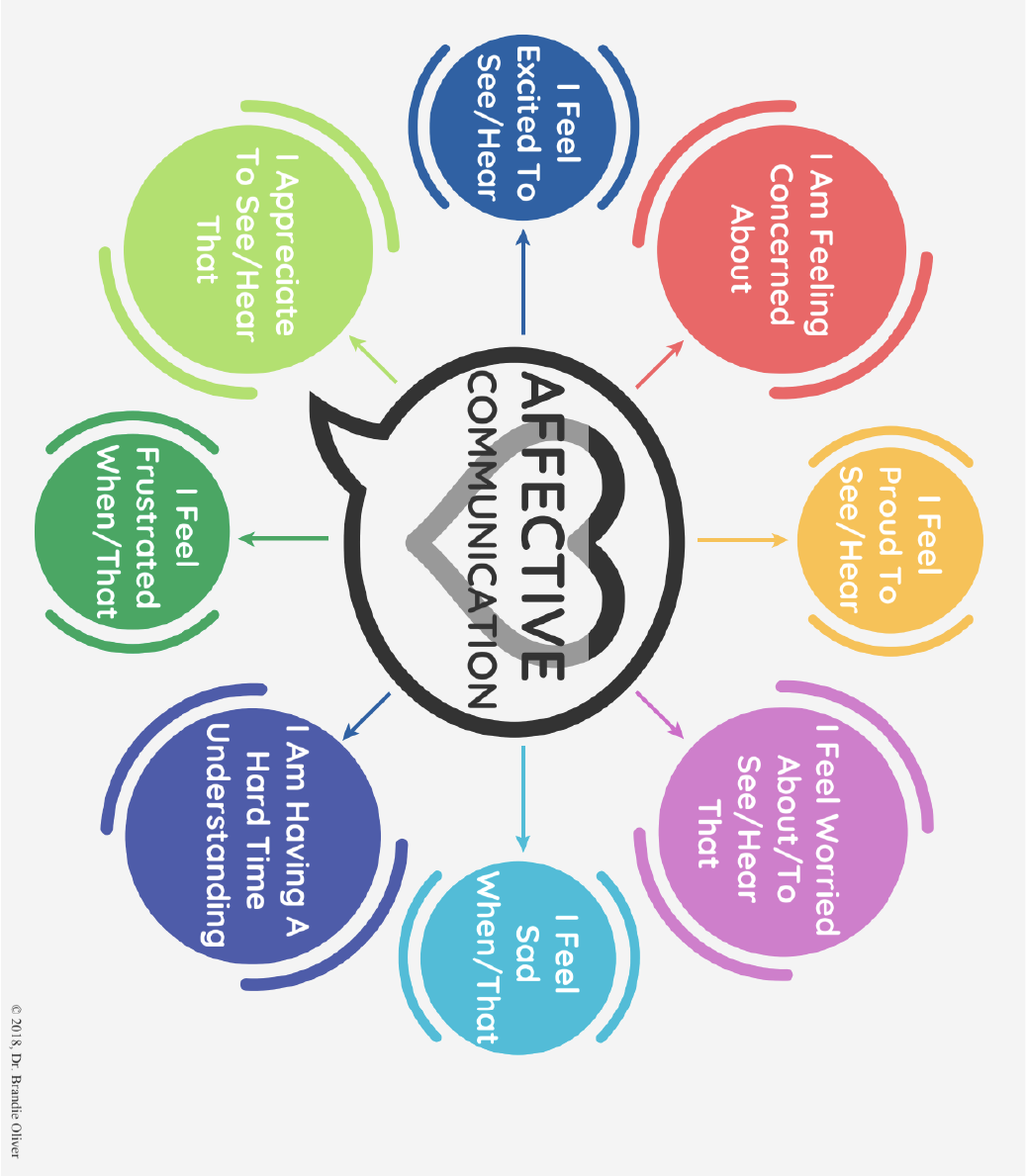
21

22
Handout 7.1: In Their Shoes Character Cards
Elias is a star forward on the school futbol
team. During one of the final games of the
season, he was injured badly, so badly that
he couldn’t play in the rest of the games,
nor could he go to school for three months.
All of Hawi’s friends are constantly talking
about going to hang out in town—the dresses
they’re going to buy, how they’re going to do
their hair, where they’re going to eat. Hawi
wants to go, but getting to the city is too
expensive, and her mom just lost her job.
Dina was invited by a local teacher to
attend school nearby. She was so excited to
go. Her parents told her that her brother
would be taking her place as she needed to
stay home and help run the household
Eman noticed that her dad was not feeling well
and was getting sicker every day. Eman’s dad
then found out he had malaria and they could
not afford to pay for any medication to help him.
During a school class, Solomon had a
seizure in front of his entire class. He came
out of it to find all his classmates staring at
him. His doctors told him he has a
condition where he could have a seizure
anytime
Abai’s friends decided to skip school to go drink
in town. Abai did not want to miss his classes
and said no. Abai’s friends made fun of him for
the next couple of weeks.
Debre had to flee his home because it was
unsafe. He was new to the country and
didn’t speak the language well. He noticed
that everyone around town would stare at
him and never say hi.
Dawit’s brother’s ex-girlfriend kissed Dawit last
weekend. Dawit didn’t kiss her back, but he
decided not to tell his brother about it just to be
safe. Dawit’s brother found out anyway and is
angry with him.
After practicing for months, Kayla tripped
and fell during her dance performance.
One of her classmates, who was using a
cellphone to videotape the show, posted
the clip of Kayla’s fall on the Internet the
next day.
Aman spoke to Lebna, admitting his crush on
her. Lebna told all of her friends, some of whom
then teased Aman at lunch about his crush on
Lebna. Telling him there was no way Lebna
would ever like him.

23
Bali found out that a mean rumor being
spread about her was started by a former
friend.
Negasi discovered that his teammate cheated by
copying from his paper during the English test.
Handout 8.1: Conflict Snowball
Instructions: Fill in the blanks with a conflict that currently exists within your school,
community, or country that relates to one of the prompts written on the board. Try and refrain
from taking a side of the conflict, simply list the parties involved and what happened/is
happening. Do not write your name on this paper.
Example: There is/was a conflict between ____the math teacher__ and ____the student____.
The __math teacher_______ believes that _the student cheated on his math test_ and the
_student__ believes that ___ she never looked off her friend’s paper__. This led to ____the
teacher failing the student and the student not going back to math class_____.
There is/was a conflict between _______________________and_______________________.
The ______________________ believes(ed) that ______________________________________
______________________________________________________________________________
and the ________________________ believes(ed) that _________________________________
_____________________________________________________________________________.
This led to_____________________________________________________________________

24
______________________________________________________________________________
______________________________________________________________________________
_____________________________________________________________________________.
Handout 8.2: Conflict Analysis
Instructions: Work as a group to answer the questions below about your assigned conflict. Once
finished, select and print an image that represents your proposed solution for the conflict. Be
ready to present for 2-3 minutes as a group in front of the class.
Names:
1. What is the topic of your conflict?
2. Is this conflict positive or negative?
3. Identify 2-3 conflict styles seen in this conflict and provide explanations/examples for each.
4. Summarize your conflict from both sides. (How does each side feel, think, act? Why might that
be?)
25
5. Which human rights do you feel are being threatened or harmed in this conflict?
6. Propose a cooperative solution for your conflict. (be creative!)
7. What can you do to help solve this conflict?
26
